What is valproic. Valproic Acid: A Comprehensive Guide to This Versatile Antiepileptic Medication
What is valproic acid and how does it work. What are the main uses of valproic acid. What are the potential side effects and risks of taking valproic acid. How is valproic acid administered and dosed. What precautions and monitoring are needed with valproic acid.
What is Valproic Acid and How Does It Work?
Valproic acid is a widely used antiepileptic medication that helps prevent and control various types of seizures. It belongs to a class of drugs called anticonvulsants. When ingested, valproic acid is converted to valproate ions in the body, which are responsible for its therapeutic effects.
The exact mechanisms of action of valproic acid are not fully understood, but it is believed to work in several ways:
- Increasing levels of gamma-aminobutyric acid (GABA), an inhibitory neurotransmitter in the brain
- Blocking voltage-gated sodium channels
- Inhibiting enzymes that break down GABA
- Modulating dopaminergic and serotonergic neurotransmission
This multi-faceted mechanism explains why valproic acid can be effective for different types of seizures and other neurological conditions.

Main Uses and Indications of Valproic Acid
Valproic acid has several approved and off-label uses in medicine. Its primary indications include:
Epilepsy and Seizure Disorders
Valproic acid is approved for treating various types of seizures, including:
- Absence seizures
- Tonic-clonic seizures
- Complex partial seizures
- Multiple seizure types in patients with Lennox-Gastaut syndrome
Bipolar Disorder
Valproic acid is used as a mood stabilizer in bipolar disorder, particularly for treating manic episodes and preventing recurrence.
Migraine Prevention
In some cases, valproic acid may be prescribed to prevent migraine headaches in adults.
Other Off-Label Uses
Although not officially approved for these purposes, valproic acid is sometimes used to treat:
- Neuropathic pain
- Agitation in dementia
- Certain psychiatric disorders
Potential Side Effects and Risks of Valproic Acid
While valproic acid can be an effective treatment for many patients, it also carries the risk of side effects and potentially serious adverse reactions.

Common Side Effects
Some of the more frequently reported side effects of valproic acid include:
- Nausea and vomiting
- Dizziness
- Drowsiness
- Weight gain
- Tremors
- Hair loss
- Changes in appetite
Serious Adverse Reactions
While rare, some patients may experience severe reactions to valproic acid. These can include:
- Liver failure
- Pancreatitis
- Blood clotting disorders
- Suicidal thoughts or behaviors
Is liver failure a significant concern with valproic acid? Liver failure is a rare but serious potential complication of valproic acid treatment. The risk is highest in children under 2 years of age, especially those taking multiple antiepileptic medications or with other serious health conditions. The risk decreases with age, being very low in older children and adults. Most cases of liver failure occur within the first 6 months of treatment.
Can valproic acid affect the pancreas? Yes, in rare cases, valproic acid can cause pancreatitis, a potentially severe inflammation of the pancreas. This can occur in both children and adults, even after years of taking the medication. Symptoms may include abdominal pain, nausea, vomiting, and loss of appetite.
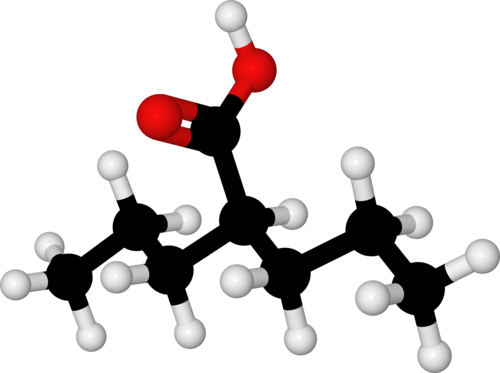
Administration and Dosing of Valproic Acid
Valproic acid is available in various formulations, including:
- Oral capsules
- Liquid solutions
- Extended-release tablets
- Intravenous injections (for hospital use)
The dosage of valproic acid varies depending on the condition being treated, the patient’s age, weight, and individual response to the medication. It’s typically started at a low dose and gradually increased to achieve the desired therapeutic effect while minimizing side effects.
How often should valproic acid be taken? The frequency of valproic acid administration depends on the formulation and the individual’s treatment plan. Some patients may take it once daily, while others might require multiple doses throughout the day. Extended-release formulations are often preferred for once-daily dosing to improve compliance and maintain steady drug levels.
Precautions and Monitoring for Patients on Valproic Acid
Due to the potential for serious side effects, patients taking valproic acid require careful monitoring and should be aware of certain precautions.

Regular Blood Tests
Patients on valproic acid typically undergo regular blood tests to monitor:
- Liver function
- Complete blood count
- Valproic acid levels in the blood
- Platelet count
Pregnancy and Breastfeeding
Valproic acid can cause serious birth defects and should be avoided during pregnancy if possible. Women of childbearing age should use effective contraception while taking this medication. Breastfeeding while on valproic acid is generally not recommended.
Drug Interactions
Valproic acid can interact with numerous medications, potentially altering their effectiveness or increasing the risk of side effects. Patients should inform their healthcare provider about all medications, supplements, and herbal products they are taking.
Valproic Acid in Special Populations
Certain groups of patients may require special consideration when being prescribed valproic acid:
Children
As mentioned earlier, children, especially those under 2 years of age, have a higher risk of liver toxicity. The benefits of treatment must be carefully weighed against the risks in this population.
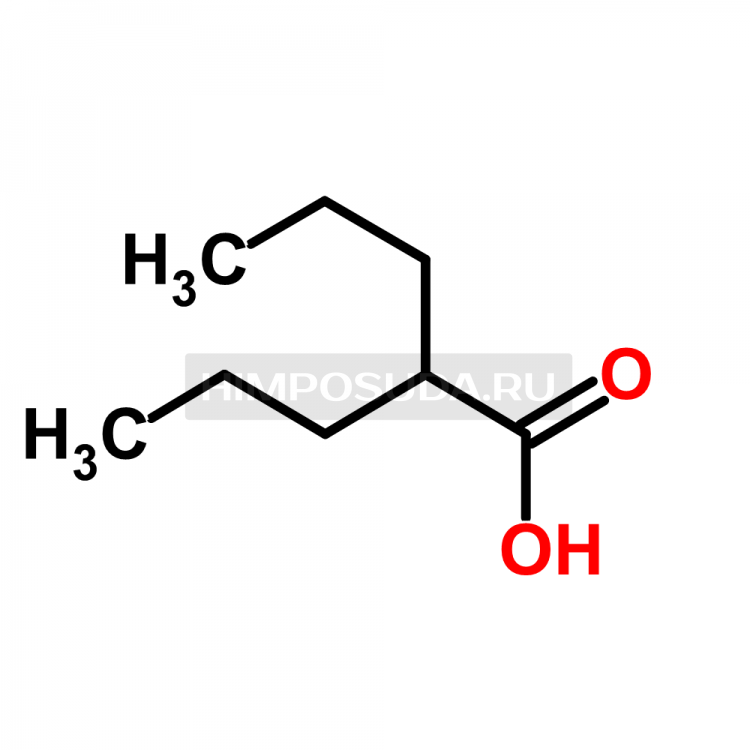
Elderly Patients
Older adults may be more sensitive to the side effects of valproic acid and may require lower doses. They may also be at increased risk of drug interactions due to polypharmacy.
Patients with Liver Disease
Given the potential for liver toxicity, valproic acid should be used with caution in patients with pre-existing liver disease. Regular monitoring of liver function is crucial in these cases.
Alternatives to Valproic Acid
While valproic acid is an effective treatment for many patients, it may not be suitable for everyone due to side effects or other factors. Alternative treatments may include:
- Other antiepileptic medications (e.g., carbamazepine, levetiracetam, lamotrigine)
- Different mood stabilizers for bipolar disorder (e.g., lithium, atypical antipsychotics)
- Alternative migraine prophylaxis medications (e.g., topiramate, propranolol)
Are there newer antiepileptic drugs with fewer side effects than valproic acid? Yes, several newer antiepileptic medications have been developed that may have more favorable side effect profiles for some patients. These include levetiracetam, lamotrigine, and oxcarbazepine. However, the choice of medication depends on the specific type of seizure, individual patient factors, and potential drug interactions.

The Future of Valproic Acid Research
Despite being in use for decades, research on valproic acid continues to explore its potential applications and mechanisms of action.
New Indications
Ongoing studies are investigating the use of valproic acid in various conditions, including:
- Certain types of cancer
- Neurodegenerative disorders like Alzheimer’s disease
- HIV infection
Improved Formulations
Researchers are working on developing new formulations of valproic acid that may offer improved efficacy, reduced side effects, or more convenient dosing schedules.
Personalized Medicine
Advances in pharmacogenomics may help identify genetic markers that predict a patient’s response to valproic acid, allowing for more personalized treatment approaches.
How might personalized medicine improve valproic acid treatment? Pharmacogenomic testing could potentially identify patients who are more likely to respond well to valproic acid or those at higher risk of certain side effects. This could help healthcare providers make more informed decisions about medication choice and dosing, potentially improving treatment outcomes and reducing adverse events.

In conclusion, valproic acid remains an important tool in the treatment of epilepsy, bipolar disorder, and migraines. While it can be highly effective, its use requires careful consideration of the potential risks and benefits, along with close monitoring. Ongoing research continues to expand our understanding of this versatile medication and may lead to new applications and improved treatment strategies in the future.
Valproic Acid Basic Seizure Medication
A few people have serious reactions to valproic acid. These problems are very rare but everyone who takes this medicine should at least be aware of them because a very small number of people have died because of them.
Here’s a list of warning signs that may be the start of one of these problems. If you notice any of these things, call the doctor immediately:
- weakness, sluggishness, swelling of the face, loss of appetite, vomiting, or yellowish eyes or skin, especially in a child under 2 years of age (possible liver failure)
- pain in the abdomen, upset stomach, vomiting, or loss of appetite (possible disease of the pancreas)
- easy bruising, nosebleed, or other abnormal bleeding (problems with clotting)
Tell the doctor right away if you notice any of these problems, but don’t stop using the valproic acid unless the doctor says so.
The best-known and most-feared serious reaction is liver failure. This disorder usually occurs within the first 6 months of treatment. The risk of liver failure is much higher in children under 2 years of age, especially if they also take other seizure medicine or already have other serious disorders. Doctors seldom prescribe valproic acid for those with the highest risk.
The risk of liver failure is much lower in children between 2 and 10. The risk is very low in older children and adults, perhaps 1 in 50,000. There is no evidence that long-term use of valproic acid will cause gradual damage to the liver.
Another rare reaction to valproic acid is a disorder of the pancreas. Occasionally it is so severe that bleeding and death can occur. Both children and adults can be affected, even after several years of taking valproic acid. Report pain in the abdomen, upset stomach, vomiting, or loss of appetite to the doctor right away.
Problems with blood clotting are more likely in people who take large amounts of valproic acid. Sometimes the blood returns to normal without stopping the medicine. The doctor probably will order some blood tests before prescribing valproic acid, and will repeat them some time later and before any elective surgery.
Sometimes the blood returns to normal without stopping the medicine. The doctor probably will order some blood tests before prescribing valproic acid, and will repeat them some time later and before any elective surgery.
A complete list of all reactions to valproic acid can be found in the package insert for brand-name Depakene, but it is important to remember that only a tiny number of people have any of these serious problems.
On July 10, 2008, an advisory panel was convened by the Food and Drug Administration (FDA) to review data that the FDA had previously collected from drug studies showing an association between many of the antiepileptic drugs (AEDs) and suicidal ideation and behavior, which together are called suicidality. According to the FDA’s Alert, among the patients with epilepsy in these drug studies, 1 out of 1000 people taking the placebo (inactive substance) showed suicidality compared to approximately 3.5 out of 1000 people who took an AED. The FDA advisory panel voted to accept the FDA’s data at its meeting on July 10.
- Taking antiepileptic medicines may increase the risk of having suicidal thoughts or actions;
- Do not make any changes to the medication regimen without first talking with the responsible healthcare professional;
- Pay close attention to any day-to-day changes in mood, behavior and actions. These changes can happen very quickly so it is important to be mindful of any sudden differences.
- Be aware of common warning signs that might be a signal for risk of suicide. Some of these are:
- Talking or thinking about wanting to hurt yourself or end your life
- Withdrawing from friends and family
- Becoming depressed or having your depression get worse
- Becoming preoccupied with death and dying
- Giving away prized possessions
We again urge patients and families to contact their doctor before stopping an epilepsy medication because this may possibly lead to seizures and worsening of mood.
What is Valproic Acid?
Valproic acid is an antiepileptic drug that is usually used in the prevention of various types of seizures, although it can also be used for several other alternative indications.
Image Credit: Imageforge / Shutterstock.com
In the body, valproic acid undergoes a reaction to become valproate ions, which are responsible for the pharmacological effects of the drug. In addition to the useful qualities of valproate, it can also result in a large number of side effects and has the potential to interact with several other drugs.
Pharmacology
Valproate is thought to act via a number of mechanisms to produce the desired effect, which explains why it can be utilized for various different indications and seizure types associated with different pathways.
The primary mechanism of action involves an increase in the neurotransmitter gamma-aminobutyric acid (GABA) in the brain. Although it is not certain how this increase occurs, many medical researchers believe this may arise as a result of increased production or enhanced effect of the neurotransmitter.
Although it is not certain how this increase occurs, many medical researchers believe this may arise as a result of increased production or enhanced effect of the neurotransmitter.
Additionally, a secondary mechanism of action of valproate involves the inhibition of sodium and calcium channels in the brain, which also affects the propagation of seizures.
Indications
The most widespread use of valproic acid is in the prevention of various types of epileptic seizures, including generalized, focal, and absence seizures. Valproic acid is also commonly used to treat the manic episodes associated with bipolar disorder, in conjunction with other medications designed to target depressive symptoms.
Other uses of valproic acid include the treatment of neuropathic pain, aggression associated with attention deficit hyperactivity disorder (ADHD) and the prevention of migraines. However, sound scientific research to support its indication for these conditions is lacking and should therefore only be considered when other options with some evidence are disregarded.
Adverse effects and complications
Valproic acid has many possible side effects due to the broad effect it has on the function of the brain and the rest of the body. The most common side effect associated with this drug is nausea and related gastrointestinal symptoms, although almost every organ and system of the body can be affected.
In addition to the adverse effects of valproic acid, there are more severe effects that can pose significant issues for some users.
Of particular note, pregnant women taking this medication are more likely to give birth to a child with congenital birth defects. As a result, most women taking valproate who are pregnant or planning to become pregnant should use an alternative medication. Additionally, all sexually active women of childbearing age should use adequate contraceptive protection to reduce the risk of an unplanned pregnancy.
Valproic acid may also cause significant damage to the liver or pancreas, which can be fatal in some cases. Signs of these complications, such a significant abdominal pain, nausea, and vomiting, should be investigated further to determine the cause.
Signs of these complications, such a significant abdominal pain, nausea, and vomiting, should be investigated further to determine the cause.
Some patients may also be allergic to valproic acid and experience a hypersensitivity reaction. This usually occurs shortly after initiation of therapy and is easily recognized by distinctive signs of an allergic reaction, such as swelling. In this case, further doses should be ceased and immediate medical attention should be sought if required.
Interactions
When valproic acid is administered together with other medications, there are several possible drug interactions that may occur.
Several drugs often used in the treatment of epilepsy alongside valproate include carbamazepine, phenobarbital, primidone, and phenytoin. These are known as metabolism enzyme inducers and increase the metabolism of valproate, which will reduce the efficacy of the current valproate dose and thus require more of the drug to be taken in order to achieve the desired therapeutic response.
Additionally, valproate can affect the bleeding time of a patient when a small blood injury occurs. This can be particularly problematic when anticoagulant medications that alter bleeding time, such as warfarin, are being taken by the patient.
References
Further Reading
Valproic acid: Uses, Interactions, Mechanism of Action
Indicated for:Label
1) Use as monotherapy or adjunctive therapy in the management of complex partial seizures and simple or complex absence seizures.
2) Adjunctive therapy in the management of multiple seizure types that include absence seizures.
3) Prophylaxis of migraine headaches.
4) Acute management of mania associated with bipolar disorder.
Off-label uses include:
1) Maintenance therapy for bipolar disorder.7
2) Treatment for acute bipolar depression.8,9,10
3) Emergency treatment of status epilepticus.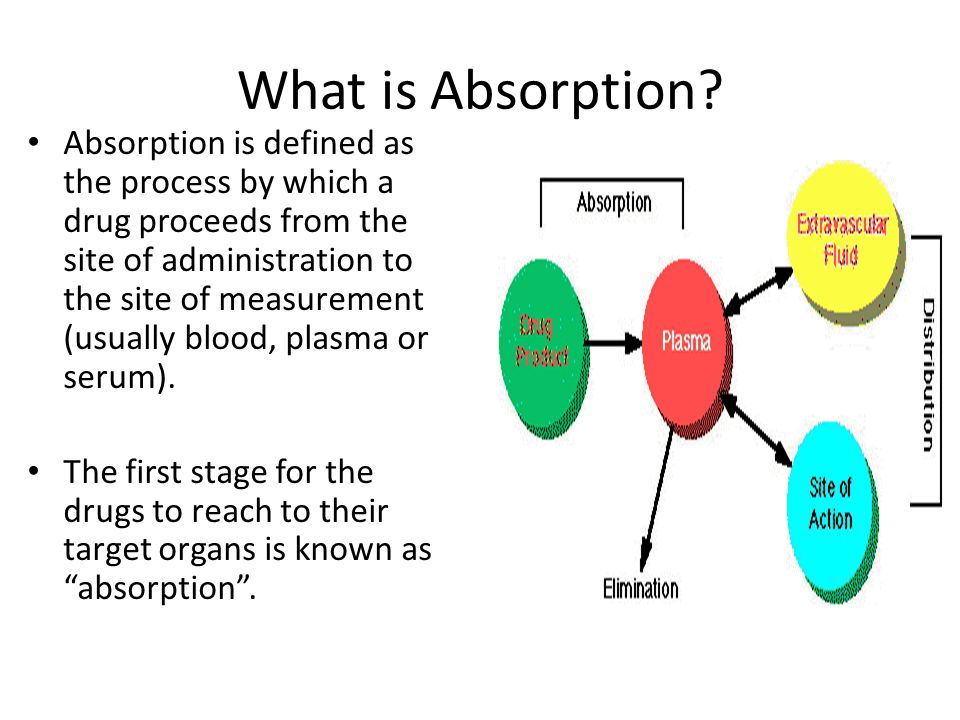 11
11
Reduce drug development failure rates
Build, train, & validate machine-learning modelswith evidence-based and structured datasets.
Build, train, & validate predictive machine-learning models with structured datasets.
Avoid life-threatening adverse drug events
Improve clinical decision support with information on contraindications & blackbox warnings, population restrictions, harmful risks, & more.
Avoid life-threatening adverse drug events & improve clinical decision support.
Valproate has been shown to reduce the incidence of complex partial seizures and migraine headaches.Label,5 It also improves symptom control in bipolar mania.23 Although the exact mechanisms responsible are unknown, it is thought that valproate produces increased cortical inhibition to contribute to control of neural synchrony. It is also thought that valproate exerts a neuroprotective effect preventing damage and neural degeneration in epilepsy, migraines, and bipolar disorder.
It is also thought that valproate exerts a neuroprotective effect preventing damage and neural degeneration in epilepsy, migraines, and bipolar disorder.
Valproate is hepatotoxic and teratogenic. The reasons for this are unclear but have been attributed to the genomic effects of the drug.1
A small proof-of concept study found that valproate increases clearance of human immunodeficiency virus (HIV) when combined with highly active antiretroviral therapy (HAART) by reactivating the virus to allow clearance, however, a larger multicentre trial failed to show a significant effect on HIV reservoirs when added to HAART.2,6 The FDA labeling contains a warning regarding HIV reactivation during valproate use.Label.
The exact mechanisms by which valproate exerts it’s effects on epilepsy, migraine headaches, and bipolar disorder are unknown however several pathways exist which may contribute to the drug’s action.
Valproate is known to inhibit succinic semialdehyde dehydrogenase.12 This inhibition results in an increase in succinic semialdehyde which acts as an inhibitor of GABA transaminase ultimately reducing GABA metabolism and increasing GABAergic neurotransmission. As GABA is an inhibitory neurotransmitter, this increase results in increased inhibitory activity.1 A possible secondary contributor to cortical inhibition is a direct suppression of voltage gated sodium channel activity and indirect suppression through effects on GABA.
It has also been suggested that valproate impacts the extracellular signal-related kinase pathway (ERK).1 These effects appear to be dependent on mitogen-activated protein kinase (MEK) and result in the phosphorylation of ERK1/2. This activation increases expression of several downstream targets including ELK-1 with subsequent increases in c-fos, growth cone-associated protein-43 which contributes to neural plasticity, B-cell lymphoma/leukaemia-2 which is an anti-apoptotic protein, and brain-derived neurotrophic factor (BDNF) which is also involved in neural plasticity and growth. Increased neurogenesis and neurite growth due to valproate are attributed to the effects of this pathway. An additional downstream effect of increased BDNF expression appears to be an increase in GABAA receptors which contribute further to increased GABAergic activity.13
Increased neurogenesis and neurite growth due to valproate are attributed to the effects of this pathway. An additional downstream effect of increased BDNF expression appears to be an increase in GABAA receptors which contribute further to increased GABAergic activity.13
Valproate exerts a non-competitive indirect inhibitory effect on myo-inosital-1-phophate synthetase.14 This results in reduced de novo synthesis of inositol monophosphatase and subsequent inositol depletion. It is unknown how this contributed to valproate’s effects on bipolar disorder but [lithium] is known to exert a similar inositol-depleting effect.15 Valproate exposure also appears to produce down-regulation of protein kinase C proteins (PKC)-α and -ε which are potentially related to bipolar disorder as PKC is unregulated in the frontal cortex of bipolar patients. This is further supported by a similar reduction in PKC with lithium.16 The inhibition of the PKC pathway may also be a contributor to migraine prophylaxis. 17 Myristoylated alanine-rich C kinase substrate, a PKC substrate, is also downregulated by valproate and may contribute to changes in synaptic remodeling through effects on the cytoskeleton.18
17 Myristoylated alanine-rich C kinase substrate, a PKC substrate, is also downregulated by valproate and may contribute to changes in synaptic remodeling through effects on the cytoskeleton.18
Valproate also appears to impact fatty acid metabolism.1 Less incorporation of fatty acid substrates in sterols and glycerolipids is thought to impact membrane fluidity and result in increased action potential threshold potentially contributing to valproate’s antiepileptic action.19 Valproate has been found to be a non-competitive direct inhibitor of brain microsomal long-chain fatty acyl-CoA synthetase.20 Inhibition of this enzyme decreases available arichidonyl-CoA, a substrate in the production of inflammatory prostaglandins. It is thought that this may be a mechanism behind valproate’s efficacy in migraine prophylaxis as migraines are routinely treated with non-steroidal anti-inflammatory drugs which also inhibit prostaglandin production.
Finally, valproate acts as a direct histone deactylase (HDAC) inhibitor.22 Hyperacetylation of lysine residues on histones promoted DNA relaxation and allows for increased gene transcription. The scope of valproate’s genomic effects is wide with 461 genes being up or down-regulated.21 The relation of these genomic effects to therapeutic value is not fully characterized however h4 and h5 hyperacetylation correlates with improvement of symptoms in bipolar patients.23 Histone hyperacetylation at the BDNF gene, increasing BDNF expression, post-seizure is known to occur and is thought to be a neuroprotective mechanism which valproate may strengthen or prolong.24 h4 hyperacetylation is associated with a reduction in glyceraldehyde-3-phosphate dehydrogenase, a pro-apoptotic enzyme, contributing further to valproate’s neuroprotective effects.25
The intravenous and oral forms of valproic acid are expected to produce the same AUC, Cmax, and Cmin at steady-state.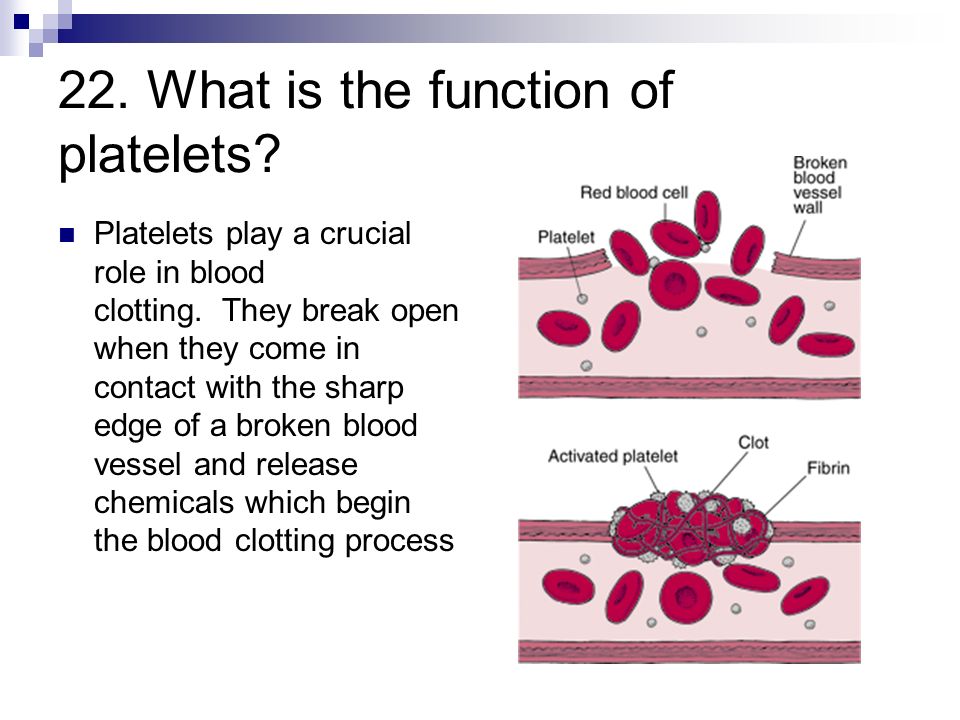 Label The oral delayed-release tablet formulation has a Tmax of 4 hours. Differences in absorption rate are expected from other formulations but are not considered to be clinically important in the context of chronic therapy beyond impacting frequency of dosing. Differences in absorption may create earlier Tmax or higher Cmax values on initiation of therapy and may be affected differently by meals.30 The extended release tablet formulation had Tmax increase from 4 hours to 8 hours when taken with food. In comparison, the sprinkle capsule formulation had Tmax increase from 3.3 hours to 4.8 hours. Bioavailability is reported to be approximately 90% with all oral formulations with enteric-coated forms possibly reaching 100%.27
Label The oral delayed-release tablet formulation has a Tmax of 4 hours. Differences in absorption rate are expected from other formulations but are not considered to be clinically important in the context of chronic therapy beyond impacting frequency of dosing. Differences in absorption may create earlier Tmax or higher Cmax values on initiation of therapy and may be affected differently by meals.30 The extended release tablet formulation had Tmax increase from 4 hours to 8 hours when taken with food. In comparison, the sprinkle capsule formulation had Tmax increase from 3.3 hours to 4.8 hours. Bioavailability is reported to be approximately 90% with all oral formulations with enteric-coated forms possibly reaching 100%.27
11 L/1.73m2.Label
Protein binding is linear at low concentrations with a free fraction of approximately 10% at 40 mcg/mL but becomes non-linear at higher concentrations with a free fraction of 18. 5% at 135 mcg/mL.Label This may be due to binding at separate high and low-affinity sites on albumin proteins.27 Binding is expected to decrease in the elderly and patients with hepatic dysfunction.
5% at 135 mcg/mL.Label This may be due to binding at separate high and low-affinity sites on albumin proteins.27 Binding is expected to decrease in the elderly and patients with hepatic dysfunction.
Most drug is metabolized to glucuronide conjugates (30-50%) of the parent drug or of metabolites.Label,27 Another large portion is metabolized through mitochondrial β-oxidation (40%). The remainder of metabolism (15-20%) occurs through oxidation, hydroxylation, and dehydrogenation at the ω, ω1, and ω2 positions resulting in the formation of hydroxyls, ketones, carboxyls, a lactone metabolite, double bonds, and combinations.
Hover over products below to view reaction partners
Most drug is eliminated through hepatic metabolism, about 30-50%.Label The other major contributing pathway is mitochondrial β-oxidation, about 40%. Other oxidative pathways make up an additional 15-20%. Less than 3% is excreted unchanged in the urine.
Less than 3% is excreted unchanged in the urine.
13-19 hours.Label
The half-life in neonates ranges from 10-67 hours while the half-life in pediatric patients under 2 months of age ranges from 7-13 hours.
0.56 L/hr/m2Label
Pediatric patients between 3 months and 10 years of age have 50% higher clearances by weight. Pediatric patients 10 years of age or older approximate adult values.Label
Improve decision support & research outcomes
With structured adverse effects data, including: blackbox warnings, adverse reactions, warning & precautions, & incidence rates.
Improve decision support & research outcomes with our structured adverse effects data.
LD50 Values
Oral, mouse: 1098 mg/kg
Oral, rat: 670 mg/kg
Overdose
Symptoms of overdose include somnolence, heart block, deep coma, and hypernatremia. Fatalities have been reported, however patients have recovered from valproate serum concentrations as high as 2120 mcg/mL. The unbound fraction may be removed by hemodialysis. Naloxone has been demonstrated to reverse the CNS depressant effects of overdose but may also reverse the anti-epileptic effects.Label
Fatalities have been reported, however patients have recovered from valproate serum concentrations as high as 2120 mcg/mL. The unbound fraction may be removed by hemodialysis. Naloxone has been demonstrated to reverse the CNS depressant effects of overdose but may also reverse the anti-epileptic effects.Label
Reproductive Toxicity
Valproate use in pregnancy is known to increase the risk of neural tube defects and other structural abnormalities.Label The risk of spina bifida increases from 0.06-0.07% in the normal population to 1-2% in valproate users. The North American Antiepileptic Drug (NAAED)
Pregnancy Registry reports a major malformation rate of 9-11%, 5 times the baseline rate. These malformations include neural tube defects, cardiovascular malformations, craniofacial defects (e.g., oral clefts, craniosynostosis), hypospadias, limb malformations (e.g., clubfoot, polydactyly), and other malformations of varying severity involving other body systems. Other antiepileptic drugs, lamotrigine, carbemazepine, and phenytoin, have been found to reduce IQ in children exposed in utero. Valproate was also studied however the results did not achieve statistical significance (97 IQ (CI: 94-101)). Observational studies report an absolute risk increase of 2.9% (relative risk 2.9 times baseline) of autism spectrum disorder in children exposed to valproate in utero. There have been case reports of fatal hepatic failure in children of mothers who used valproate during pregnancy.
Other antiepileptic drugs, lamotrigine, carbemazepine, and phenytoin, have been found to reduce IQ in children exposed in utero. Valproate was also studied however the results did not achieve statistical significance (97 IQ (CI: 94-101)). Observational studies report an absolute risk increase of 2.9% (relative risk 2.9 times baseline) of autism spectrum disorder in children exposed to valproate in utero. There have been case reports of fatal hepatic failure in children of mothers who used valproate during pregnancy.
There have been reports of male infertility when taking valproate.Label
Lactation
Valproate is excreted in human milk.Label Data in the published literature describe the presence of valproate in human milk (range: 0.4 mcg/mL to 3.9 mcg/mL), corresponding to 1% to 10% of maternal serum levels. Valproate serum concentrations collected from breastfed infants aged 3 days postnatal to 12 weeks following delivery ranged from 0. 7 mcg/mL to 4 mcg/mL, which were 1% to 6% of maternal serum valproate levels. A published study in children up to six years of age did not report adverse developmental or cognitive effects following exposure to valproate
7 mcg/mL to 4 mcg/mL, which were 1% to 6% of maternal serum valproate levels. A published study in children up to six years of age did not report adverse developmental or cognitive effects following exposure to valproate
via breast milk.
Other Toxicity Considerations
Use in pediatrics under 2 years of age increases the risk of fatal hepatotoxicity.Label
| Interacting Gene/Enzyme | Allele name | Genotype(s) | Defining Change(s) | Type(s) | Description | Details |
|---|---|---|---|---|---|---|
| DNA polymerase subunit gamma-1 | A467T | (A;A) / (A;G) | G > A | ADR Directly Studied | The presence of this polymorphism in POLG may indicate an increased risk of liver failure and death when treated with valproic acid. | Details |
| DNA polymerase subunit gamma-1 | W748S | (C;C) / (C;G) | G > C | ADR Directly Studied | The presence of this polymorphism in POLG may indicate an increased risk of liver failure and death when treated with valproic acid. | Details |
Valproic Acid Test – About, Preparation, Test Results & More
clinical definition of valproic acid
Valproic acid is used to treat certain seizure disorders (epilepsy), bipolar disease and prevent migraine headaches. It is recommended in conjunction with other antiepileptic drugs like phenytoin or phenobarbital to keep a check on certain seizures. Seizure disorders impact the brain’s ability to transmit electrical impulses and monitor nerve activity. The valproic acid level is maintained within a narrow therapeutic range as a lesser amount of this drug can lead to recurrence of symptoms and anything in excess results in the severity of the mentioned symptoms.
During a seizure, a person experiences alterations in sight, smell, and taste, convulsions, and changes in consciousness. Bipolar disorder is a mental condition that is indicated by cycles of depression and mania.
What is Valproic Acid test?
Valproic Acid is a medication prescribed for treatment of seizures, bipolar disorders (mental or mood conditions) and to treat migraine headaches. This acid is also known as Sodium Valproate acid.
This acid is also known as Sodium Valproate acid.
Valproic Acid test is taken to measure and monitor the amount of valproic acid present in the blood sample. This test performed show drug toxicity levels and even during treatment and post-treatment drug toxicity levels.
why get tested?
The valproic acid test is done to monitor the concentration of valproic acid in the blood and to detect low or excessive (potentially toxic) concentrations.
reasons to take valproic acid test
• Alterations in sight, smell, and taste
• Head trauma
• Migraine headaches
• Metabolic disorders
• A brain tumour
• High fever
• Changes in consciousness
• Convulsions Severe infections
what other tests might i have along with valproic acid test?
Valproic acid is a drug used to primarily lessen the severity and frequency of uncontrolled seizures. Alongside this test, the doctor may be prescribing a combination of certain antiepileptic drugs: phenytoin or Phenobarbital.
why do i need valproic acid test?
Valproic acid treatment is mainly required to control seizures also known as epilepsy, bipolar disorders. Valproic acid is very effective for migraine treatment as well.
Seizure disorders disrupt the brain’s ability to transmit signals and monitor nerve activity. These disruptions lead to mental conditions caused due to temporary communication problems from the nerves cells to the brain. This leads to mild symptoms like (staring into space or blinking) and severe (the whole body trembling or fainting).
Seizures can be caused due to various reasons:
1. Infections like meningitis or encephalitis
2. Brain trauma caused due to accidents or lack of oxygen during birth
3. A genetic or metabolic disorder
4. A stroke or a brain tumour
5. Congenital brain or malformation of a Blood vessel
Usually what leads to seizures, can possibly remain unknown.
This test is done to monitor the amount of valproic acid which is an anticonvulsant test existing in the blood sample. Valproic acid is mainly done to prevent these seizures.
Valproic acid is mainly done to prevent these seizures.
what do my test results mean?
The Valproic acid normal range should be maintained within a limited therapeutic range. The normal range of Valproic acid level is between 50-125ug/mL for both genders and all age groups. The Valproic acid toxicity level is more than 150ug/mL.
Generally, if the valproic acid is within the normal range, and if the person is not affected by recurrent seizures, migraines or mood swings, and not having any side effects, then the dosage is considered to be adequate.
how is valproic acid test done?
To conduct a Valproic acid blood test, there are no predetermined preparations.
However, before the test is conducted the doctor needs to be aware of any pre-medications taken, as this can affect the test results.
the procedure to take valproic acid test?
Venipuncture- A needle is inserted into the vein of the arm and blood is pulled out. The skin surface is then wiped with an antiseptic and a tape is placed over the area. This procedure takes place in 5 minutes.
This procedure takes place in 5 minutes.
The results will usually take a couple of hours or the next day.
does valproic acid test pose any risk?
This medical test is usually safe. The only problems during or post this test would include lightheadedness due to blood been taken. Some amount of pain may occur when blood is taken out due to multiple pricking while trying to locate the vein.
what might affect my test results?
The valproic acid drug dosage should be taken as prescribed by the doctor. A high or low dosage or stoppage of this medication can affect the valproic acid test results which may again lead to seizures or other side effects.
valproic acid side effects
1. Nausea
2. Fever
3. Headaches
4. Sleep problems
5. Hair loss
6. Rashes on skin
7. Dizziness or fainting
8. Memory problems
9. Depression
10. Indigestion or stomach ache
11. Constipation
12. Diarrhoea
13. A sore Throat
A sore Throat
14. Sneezing
15. Flu symptoms
16. A cough
17. Bruising
preparations needed for valproic acid test
No Fasting Required.
No other special preparations required.
sample required for valproic acid test?
Specimen type: Serum (Blood Sample), Specimen collection procedure: Venipuncture – Collection of blood from a vein, usually from the arm.
Understanding results ofValproic Acid
| 50 to 100 µg/ml | Therapeutic range |
‘*A Reference range is a set of values which helps the healthcare professional to interpret a medical test. It may vary with age, gender, and other factors. Reference ranges may also vary between labs, in value & units depending on instruments used and method of establishment of reference ranges’
valproic acid (oral/injection) | Cigna
What are the possible side effects of valproic acid?
Get emergency medical help if you have signs of an allergic reaction (hives, difficult breathing, swelling in your face or throat) or a severe skin reaction (fever, sore throat, burning eyes, skin pain, red or purple skin rash with blistering and peeling).
Seek medical treatment if you have a serious drug reaction that can affect many parts of your body. Symptoms may include: skin rash, fever, swollen glands, muscle aches, severe weakness, unusual bruising, or yellowing of your skin or eyes.
Call your doctor at once if the person taking this medicine has signs of liver or pancreas problems, such as: loss of appetite, upper stomach pain (that may spread to your back), ongoing nausea or vomiting, dark urine, swelling in the face, or jaundice (yellowing of the skin or eyes).
Report any new or worsening symptoms to your doctor, such as: mood or behavior changes, depression, anxiety, panic attacks, trouble sleeping, or if you feel impulsive, irritable, agitated, hostile, aggressive, restless, hyperactive (mentally or physically), or have thoughts about suicide or hurting yourself.
Call your doctor at once if you have any of these other side effects:
- confusion, tiredness, cold feeling, vomiting, change in your mental state;
- easy bruising, unusual bleeding (nose, mouth, or gums), purple or red pinpoint spots under your skin;
- severe drowsiness; or
- worsening seizures.
Severe drowsiness may be more likely in older adults.
Common side effects may include:
- nausea, vomiting, stomach pain, diarrhea;
- dizziness, drowsiness, weakness;
- headache;
- tremors, problems with walking or coordination;
- blurred vision, double vision;
- hair loss; or
- changes in appetite, weight gain.

This is not a complete list of side effects and others may occur. Call your doctor for medical advice about side effects. You may report side effects to FDA at 1-800-FDA-1088.
Depakote Drug Profile and Side Effects
Depakote (divalproex sodium, sodium valproate, and valproic acid) is an anticonvulsant (anti-seizure) medication that is also used as a mood stabilizer in the treatment of bipolar disorder. Depakene contains the same medication—the difference is that Depakote is coated, which is thought to decrease some of the gastrointestinal side effects.
Uses, Forms, and Levels
Depakote is approved by the U.S. Food and Drug Administration (FDA) for the treatment of mania, with or without psychotic features. It’s also approved to prevent migraines and treat epilepsy and is frequently prescribed for people who have hypomania. Like other medications, Depakote is sometimes prescribed off-label for other conditions as well.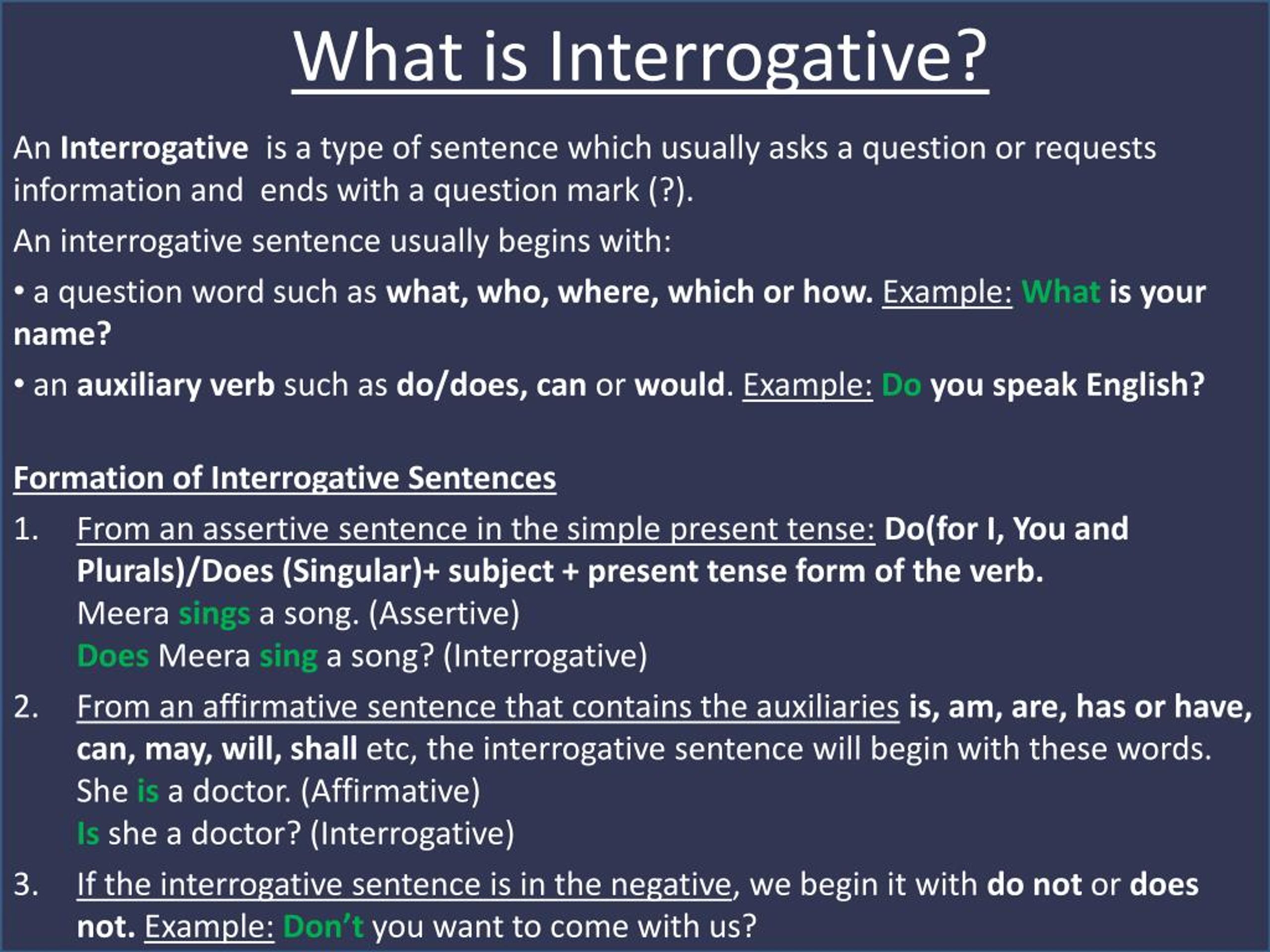
This drug is available in a variety of forms and dosages, including capsules, sprinkles, extended-release tablets, delayed-release tablets, and syrup.
Depakote levels are routinely checked with blood tests to make sure you have neither too little nor too much in your system. Too little will render it ineffective while too much may be toxic.
Side Effects
The most common side effects of Depakote include:
- Nausea
- Somnolence (drowsiness)
- Dizziness
- Vomiting
- Weakness
- Abdominal pain
- Dyspepsia (indigestion)
- Rash
Let your doctor know if these side effects are severe or if they aren’t going away.
Here are some of the warnings associated with Depakote:
- There is some risk of increased suicidal ideation and behavior in patients being treated with this category of anticonvulsants.
- There has been some correlation of Depakote with liver problems, so your doctor may check your liver function with blood tests.

- Depakote can cause damage to your pancreas, and if this is diagnosed, it should ordinarily be discontinued. Symptoms that can indicate liver or pancreas problems include dark urine, nausea, vomiting, clay-colored stools, upper stomach pain, loss of appetite, low fever, or jaundice (yellowing of the skin or eyes). Emergency medical attention is needed if these symptoms appear.
- In elderly patients, dosage adjustment and close monitoring of potential side effects are important.
Depakote and Pregnancy
Depakote should only be used with extreme caution if you’re pregnant. Birth defects, such as spina bifida, and developmental problems, such as lowered IQ, have been reported. Talk to your doctor about your medication options if you’re pregnant or are considering getting pregnant.
Depakote is excreted in breast milk. According to the FDA, strong consideration should be given to discontinuing nursing when Depakote is given to a nursing woman, as it may harm the infant.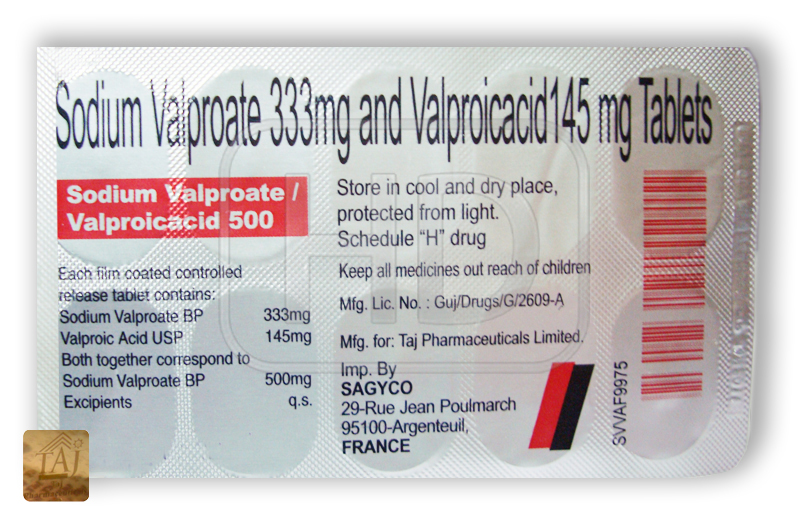 If you plan to nurse your child, make sure your doctor knows you’re taking Depakote.
If you plan to nurse your child, make sure your doctor knows you’re taking Depakote.
Drug Interactions
Taking Depakote and Lamictal (lamotrigine) together can increase the likelihood of serious skin rashes, including Stevens-Johnson Syndrome and toxic epidermal necrolysis. The Lamictal dosage should be reduced when it’s co-administered with Depakote.
There are many other medications that can interact with Depakote and increase potential side effects, including common drugs, like aspirin. You should inform your doctor about all other medications, including over-the-counter medications, supplements, vitamins, and herbs, that you’re taking along with Depakote.
Is Valproate Depressogenic in Patients Remitting from Acute Mania? Case Series
Valproate is an effective antimanic agent and is recommended as a first-line medication in the treatment of acute mania. Current evidence based guidelines recommend that valproate should be given as a loading dose as it produces a rapid antimanic and antipsychotic response with minimal side-effects. However, no clear guidelines are available on the appropriate dosing or serum levels of valproate in the continuation or maintenance phase of bipolar disorder. We present 4 clinical cases to hypothesize that the higher doses of valproate, such as those used in the treatment of acute mania, may cause a depressive switch. So consideration should be given to reducing the dose of valproate if a patient develops depressive symptoms following recovery from the manic episode, as a therapeutic strategy. The cases also indicate that relatively lower doses and serum levels of valproate are effective in the maintenance phase compared to those needed in the acute manic phase of bipolar disorder. This is the first set of case series that questions the depressogenic potential of valproate in patients remitting from an acute manic episode. It highlights that different doses and serum levels of valproate may be therapeutic in different phases of bipolar disorder.
However, no clear guidelines are available on the appropriate dosing or serum levels of valproate in the continuation or maintenance phase of bipolar disorder. We present 4 clinical cases to hypothesize that the higher doses of valproate, such as those used in the treatment of acute mania, may cause a depressive switch. So consideration should be given to reducing the dose of valproate if a patient develops depressive symptoms following recovery from the manic episode, as a therapeutic strategy. The cases also indicate that relatively lower doses and serum levels of valproate are effective in the maintenance phase compared to those needed in the acute manic phase of bipolar disorder. This is the first set of case series that questions the depressogenic potential of valproate in patients remitting from an acute manic episode. It highlights that different doses and serum levels of valproate may be therapeutic in different phases of bipolar disorder.
1. Introduction
Bipolar disorder is a severe mental illness characterized by recurrent episodes of mania and depression and is associated with high morbidity and mortality. Valproate is an anticonvulsant that is commonly used in the treatment of bipolar disorder (BPD). It has been found to be effective in the treatment of acute mania and is now one of the first-line agents [1–3]. There is limited evidence to confirm its role in the treatment of an acute depressive episode [4–6]. The efficacy of valproate has been found to be comparable to lithium in the maintenance phase of BPD based on results from a few randomized controlled trials [7–10].
Valproate is an anticonvulsant that is commonly used in the treatment of bipolar disorder (BPD). It has been found to be effective in the treatment of acute mania and is now one of the first-line agents [1–3]. There is limited evidence to confirm its role in the treatment of an acute depressive episode [4–6]. The efficacy of valproate has been found to be comparable to lithium in the maintenance phase of BPD based on results from a few randomized controlled trials [7–10].
In acute mania, valproate oral loading (doses of 20–30 mg/Kg body weight) produces a rapid antimanic and antipsychotic response with minimal side-effects [11–13]. Additionally, there seems to be a linear relationship between valproate serum concentration and response in acute mania. Serum levels between 50 and 100 μg/mL have been found to be therapeutic with the target blood level of valproate for optimal response in acute mania being above 94 μg/mL [14, 15].
The evidence available on either the dosing range or target serum levels of valproate in the continuation or maintenance phase of BPD is poor [16].
We present 4 cases to hypothesize that (a) higher doses of valproate, such as those used in acute mania, may induce a depressive switch following remission from acute mania and (b) relatively lower doses and serum levels of valproate are needed to be effective in the maintenance phase as compared to the manic phase of BPD.
2. Case 1
Case 1 is a 57-year-old woman (weight = 77 Kg) who was admitted to hospital with an acute manic episode. She had a previous history suggestive of a depressive episode, for which she was prescribed escitalopram 10 mg by her family physician about 2 months prior to current admission. At admission, escitalopram was discontinued and divalproex sodium EC 500 mg daily was initiated, the dose of which was increased to 1000 mg daily at bedtime within a week. The steady state serum level was 452 mmol/litre (therapeutic range 350–700). Risperidone (1.5 mg hs) was added to address some unresolved paranoid symptoms. The patient improved clinically enough in 4 weeks to be discharged from hospital. During a subsequent ambulatory appointment one month later, she presented with depressive symptoms including a lack of motivation, low energy, and tearfulness. She complained of “grogginess” with risperidone; henceforth the dose was tapered to 1 mg at bedtime and then 0.5 mg after another month. Three months after her discharge she continued to complain about ongoing depressive symptoms. Her serum valproate level on the 1000 mg dose was 784 mmol/L. Her dose of valproate was then reduced down to 750 mg at bedtime. At her next presentation in six weeks, she was assessed to be euthymic and the serum level of valproate was 362 mmol/L. She continued to remain stable for subsequent 6 months and then experienced another depressive episode. At that point, her serum valproate level was 528 mmol/L whilst on a valproate dose of 750 mg. She was also continuing risperidone 0.5 mg at bedtime. Escitalopram 10 mg was added for management of symptoms of depression and risperidone was discontinued for feelings of “fogginess” on the medication.
During a subsequent ambulatory appointment one month later, she presented with depressive symptoms including a lack of motivation, low energy, and tearfulness. She complained of “grogginess” with risperidone; henceforth the dose was tapered to 1 mg at bedtime and then 0.5 mg after another month. Three months after her discharge she continued to complain about ongoing depressive symptoms. Her serum valproate level on the 1000 mg dose was 784 mmol/L. Her dose of valproate was then reduced down to 750 mg at bedtime. At her next presentation in six weeks, she was assessed to be euthymic and the serum level of valproate was 362 mmol/L. She continued to remain stable for subsequent 6 months and then experienced another depressive episode. At that point, her serum valproate level was 528 mmol/L whilst on a valproate dose of 750 mg. She was also continuing risperidone 0.5 mg at bedtime. Escitalopram 10 mg was added for management of symptoms of depression and risperidone was discontinued for feelings of “fogginess” on the medication. At the time of reporting the case, the patient has been in remission for about three years on a combination of valproate 750 mg and escitalopram 10 mg.
At the time of reporting the case, the patient has been in remission for about three years on a combination of valproate 750 mg and escitalopram 10 mg.
3. Case 2
Case 2 is a 40-year-old woman (weight = 59 Kg) who was admitted with an acute manic episode. She had been discharged from hospital 4 weeks prior to this admission, when she was admitted with a manic episode and discharged on risperidone 1 mg at bedtime, which she soon stopped taking due to side-effects. At this admission, divalproex sodium EC was started at 250 mg at bedtime and titrated up to 1000 mg. Her steady state serum valproate level was 652 mmol/L. She improved in mental state and was discharged from hospital in three weeks. At follow-up visit at two weeks, she complained of feeling sedated on valproate and so the dose was reduced to 750 mg and then to 500 mg 6 weeks later. She remained stable in her mood for 5 months but then reported that “valproate was making her slower and lower in her mood.” She reported that she had reduced the dose of valproate further down to 62. 5 mg (half of 125 mg pill) and had added low dose of aripiprazole (5 mg) in consultation with her family physician, to help with low mood. She remains in remission on this combination for about three years at the time of reporting the case.
5 mg (half of 125 mg pill) and had added low dose of aripiprazole (5 mg) in consultation with her family physician, to help with low mood. She remains in remission on this combination for about three years at the time of reporting the case.
4. Case 3
Case 3 is a 32-year-old man (weight = 89 Kg) who presented with the first episode of mania in the summer of 2011, without any psychiatric history. His past medical history was significant for a car accident, which had occurred 17 years priorly. He had been in a coma for three days following the collision, but CT head was unremarkable. For the manic episode, he was treated with divalproex sodium EC at a dose of 1000 mg at bedtime as well as Seroquel XR 200 mg. The steady state serum valproate level was 663 mmol/L. He improved in mental state and was discharged from hospital in 3 weeks on the same dose of valproate, but his Seroquel was discontinued due to feelings of grogginess. At the outpatient appointment one month following discharge, he presented with low mood and a decision was made to decrease the valproate to 750 mg at bedtime. The steady state serum level at this point was 425 mmol/L. A month later, the patient had reduced the dose on his own to 500 mg due to feeling depressed and felt that reducing the dose had helped. His valproate level was measured at 168 mmol/L. He remained stable for roughly two months before returning to clinic, feeling depressed and anxious. Escitalopram 10 mg daily and clonazepam 0.5 mg daily prn were started for these symptoms. He did not continue on escitalopram, as he would often forget to take it and reported improvement with clonazepam alone. He remained stable on valproate 500 mg and clonazepam for 18 months. The dose of valproate was then increased to 625 mg for better control of anxiety symptoms. He remains stable on this dose for about two and a half years, as well as 0.5 mg of clonazepam and trazodone 50 mg for sleep at the time of reporting this case.
The steady state serum level at this point was 425 mmol/L. A month later, the patient had reduced the dose on his own to 500 mg due to feeling depressed and felt that reducing the dose had helped. His valproate level was measured at 168 mmol/L. He remained stable for roughly two months before returning to clinic, feeling depressed and anxious. Escitalopram 10 mg daily and clonazepam 0.5 mg daily prn were started for these symptoms. He did not continue on escitalopram, as he would often forget to take it and reported improvement with clonazepam alone. He remained stable on valproate 500 mg and clonazepam for 18 months. The dose of valproate was then increased to 625 mg for better control of anxiety symptoms. He remains stable on this dose for about two and a half years, as well as 0.5 mg of clonazepam and trazodone 50 mg for sleep at the time of reporting this case.
5. Case 4
Case 4 is a 42-year-old woman (weight = 59 Kg). She was admitted with an acute manic episode with psychosis. She had been previously diagnosed with major depressive disorder with psychosis and had been stable on escitalopram 20 mg for about a year. This was the first manic episode precipitated by work related stressors. The escitalopram was discontinued and the patient was initiated on divalproex sodium EC, the dose of which was increased to 1000 mg over 5 days. In addition she was also started on risperidone 0.5 mg and the dose increased to 1.5 mg at bedtime over one week. The serum level of valproate reported after one week was 1032 mmol/L and so the dose was reduced from 1000 mg to 750 mg at bedtime. The serum valproate level after one week was 877 mmol/lit. The dose was further reduced to 500 mg and serum level after one week was 644 mmol/L. The complete blood count and liver function tests were normal.
She had been previously diagnosed with major depressive disorder with psychosis and had been stable on escitalopram 20 mg for about a year. This was the first manic episode precipitated by work related stressors. The escitalopram was discontinued and the patient was initiated on divalproex sodium EC, the dose of which was increased to 1000 mg over 5 days. In addition she was also started on risperidone 0.5 mg and the dose increased to 1.5 mg at bedtime over one week. The serum level of valproate reported after one week was 1032 mmol/L and so the dose was reduced from 1000 mg to 750 mg at bedtime. The serum valproate level after one week was 877 mmol/lit. The dose was further reduced to 500 mg and serum level after one week was 644 mmol/L. The complete blood count and liver function tests were normal.
The serum prolactin level after one week of risperidone 1.5 mg dose was found at 146 μgm/L. She started expressing delusion of pregnancy. A decision was made to cross-taper risperidone with olanzapine 10 mg hs. Serum prolactin came down to 36 μgm/L in two weeks.
Serum prolactin came down to 36 μgm/L in two weeks.
Her manic and psychotic symptoms resolved by week 3 of admission; however, she reported feeling depressed, being tearful and guilty, and having difficulty in making decisions by week 2. As the dose and serum levels of valproate went down, her mood started improving and she was eventually discharged after 5 weeks of admission. She was on valproate 500 mg at bedtime and olanzapine 10 mg at bedtime at discharge. At outpatient follow-up in two weeks, she continued to experience some residual depressive symptoms and so valproate was reduced further down to 375 mg and olanzapine continued at 10 mg at bedtime. The dose of olanzapine was gradually reduced to 5 mg due to complaints of excessive sedation. She remains euthymic for 12 months at the time of reporting this case; current medications include valproate 375 mg and olanzapine 5 mg daily.
6. Discussion
All the four cases presented above were diagnosed with a manic episode, at the time of admission to hospital. Case 1 may be different from the remaining cases as her index manic episode appears to be induced by the use of an antidepressant. It is possible that she initially presented with a mixed episode which may have been misdiagnosed as depressive episode by the family physician and treated with escitalopram; by the time she was admitted to hospital, the clinical picture was predominantly manic.
Case 1 may be different from the remaining cases as her index manic episode appears to be induced by the use of an antidepressant. It is possible that she initially presented with a mixed episode which may have been misdiagnosed as depressive episode by the family physician and treated with escitalopram; by the time she was admitted to hospital, the clinical picture was predominantly manic.
We observe from all of the four cases that even though the dose of valproate was reduced in the maintenance phase of BPD, there was no recurrence of mania in the three-year follow-up period, in spite of adding a low dose of antidepressant in Case 1 for a significant period of time. Case 2 received additional aripiprazole, which may have antimanic effects, but in her case it was prescribed for treating depressive symptoms. Therefore, we hypothesize that relatively lower doses of valproate are required to prevent manic recurrence as compared to doses used for treatment of an acute manic episode. As such, using a lower dose may be of benefit as it reduces the risk of dose related adverse effects during the maintenance phase of BPD.
As such, using a lower dose may be of benefit as it reduces the risk of dose related adverse effects during the maintenance phase of BPD.
Another observation made from these cases is that the patients who were continued on the same doses of valproate which were effective for acute mania (doses of ≥750 mg daily), in the continuation phase, went on to develop prominent symptoms of depression. It is possible that this was the natural course of illness and valproate was not able to prevent a relapse of depressive episode; however, this seems unlikely as the depressive symptoms improved as the dose of valproate was reduced. It is therefore additionally hypothesized that the higher dose of valproate used for acute mania may induce a depressive switch and that reducing the dose of valproate may be of benefit in patients who develop depressive symptoms following recovery from a manic episode. This may preclude the need for additional psychotherapeutic agent for the treatment of the depressive episode, as well as reducing the risk of adverse effects.
We conducted a comprehensive literature search to answer two questions raised from our case series: (a) What doses or serum levels of valproate are efficacious and safe in the continuation or maintenance phase of BPD and (b) is valproate “depressogenic” or does it induce depressive switch in patients with BPD?
Our search revealed no published prospective studies examining the relationship between dosing or serum levels of valproate and its efficacy and safety in the continuation or maintenance phase of BPD. A recent updated Cochrane review on valproate in the maintenance treatment of BPD by Cipriani et al., 2013 [7], identified six randomized controlled trials ( participants) lasting 6 to 24 months. Unfortunately, none of the trials included in this Cochrane review specifically examined either the doses or serum levels of valproate in the maintenance treatment of BPD. In fact, the trials used the doses as recommended for acute mania (750 to 1250 mg daily) and aimed to achieve serum levels as indicated for a manic episode (>50 μg/mL) [8–10].
There is one study that looked at the valproate serum levels in maintenance therapy of BPD [16]. The authors retrospectively examined the serum valproate levels in 17 bipolar I and 24 bipolar II disorder outpatients who had been treated with stable doses of valproate successfully for at least 12 months as prophylactic therapy. The trough serum valproate levels were 52.2 ± 20.4 microg/mL in bipolar I and 41.0 ± 18.3 microg/mL in bipolar II patients, respectively. The authors suggested that there may be a correlation between the level of valproate required for stabilization and the subtype of the BPD.
None of the trials conducted on use of valproate in BPD so far have reported or examined its potential to induce a depressive switch. It is important to note that the evidence for its antidepressant efficacy is generally poor and valproate monotherapy is not recommended as a first-line therapy for the treatment of bipolar I or bipolar II depressive episode [1, 5, 6]. The BALANCE trial looked at lithium plus valproate combination therapy versus monotherapy for relapse prevention in bipolar I disorder. On secondary outcome analysis, this trial indicated that advantage of lithium compared to valproate was most apparent for depressive relapses [9].
On secondary outcome analysis, this trial indicated that advantage of lithium compared to valproate was most apparent for depressive relapses [9].
It is interesting to note that, according to the latest CANMAT guidelines released in 2013, valproate monotherapy is recommended as one of the first-line agents in the maintenance phase of bipolar I disorder but only as second-line agent for maintenance phase of bipolar II disorder [1]. Does this mean valproate may have differential efficacy in the maintenance phase of bipolar I and bipolar II disorders?
7. Conclusion
From our case series, it is suggested that the higher doses of valproate, such as those used in the treatment of acute mania, may cause a depressive switch following remission from the manic episode. So consideration should be given to reducing the dose of valproate if a patient develops depressive symptoms following recovery from the manic episode, as a therapeutic strategy. The cases also indicate that relatively lower doses and serum levels of valproate are effective in the maintenance phase compared to those needed in the acute manic phase of bipolar disorder. We acknowledge the limitations of the above hypotheses as these are based on the observations made in the above reported four cases only.
We acknowledge the limitations of the above hypotheses as these are based on the observations made in the above reported four cases only.
Further good quality research, including randomized controlled trials, is required to examine the minimum effective doses (and serum levels) of valproate in the maintenance therapy of BPD as well as to examine its potential to induce a depressive switch following remission from acute mania. The differential effect of valproate in bipolar I and bipolar II disorder with and without rapid cycling/mixed features also needs to be explored further.
Consent
Written informed consent was obtained from all the patients for publication of this case series.
Conflict of Interests
The authors declare that they have no conflict of interests.
Authors’ Contribution
Kamini Vasudev was the attending physician for all the cases reported and made clinical observation as reported in the case series. She was a major contributor in writing the paper. Priya Sharma extracted details of patients from the chart and also contributed to writing the paper. Both authors have read and approved the final paper.
Priya Sharma extracted details of patients from the chart and also contributed to writing the paper. Both authors have read and approved the final paper.
Acknowledgment
The authors are thankful to their patients for giving them consent to publish their anonymized information.
Valproic acid instructions for use: indications, contraindications, side effects – description Valproic acid tab. prolonged. actions, cover. film coating, 300 mg: 30 or 100 pcs. (46091)
With the simultaneous use of antipsychotics, antidepressants, MAO inhibitors, benzodiazepine derivatives, ethanol, the inhibitory effect on the central nervous system is enhanced.
With the simultaneous use of agents with a hepatotoxic effect, it is possible to increase the hepatotoxic effect.
With simultaneous use, the effects of antiplatelet agents (including acetylsalicylic acid) and anticoagulants are enhanced.
With simultaneous use, the concentration of zidovudine in the blood plasma increases, which leads to an increase in its toxicity.
With simultaneous use with carbamazepine, the concentration of valproic acid in the blood plasma decreases due to an increase in its metabolic rate due to the induction of microsomal liver enzymes under the influence of carbamazepine.Valproic acid potentiates the toxic effect of carbamazepine.
With simultaneous use slows down the metabolism of lamotrigine and increases its T 1/2 .
With simultaneous use with mefloquine, the metabolism of valproic acid in the blood plasma increases and the risk of seizures increases.
With simultaneous use with meropenem, it is possible to reduce the concentration of valproic acid in the blood plasma; with primidone – an increase in the concentration of primidone in the blood plasma; with salicylates – it is possible to enhance the effects of valproic acid due to its displacement by salicylates from the connection with blood plasma proteins.
With simultaneous use with felbamate, the concentration of valproic acid in the blood plasma increases, which is accompanied by manifestations of toxic effects (nausea, drowsiness, headache, decreased platelet count, cognitive impairment).
With simultaneous use with phenytoin during the first few weeks, the total concentration of phenytoin in blood plasma may decrease due to its displacement from the sites of binding to plasma proteins by sodium valproate, induction of liver microsomal enzymes and acceleration of phenytoin metabolism.Further, there is an inhibition of the metabolism of phenytoin by valproate and, as a result, an increase in the concentration of phenytoin in the blood plasma. Phenytoin reduces the concentration of valproate in the blood plasma, probably by increasing its metabolism in the liver. It is believed that phenytoin, as an inducer of hepatic enzymes, may also increase the formation of a minor but hepatotoxic metabolite of valproic acid.
With the simultaneous use of valproic acid displaces phenobarbital from the connection with plasma proteins, as a result, its concentration in the blood plasma increases.Phenobarbital increases the metabolic rate of valproic acid, which leads to a decrease in its concentration in blood plasma.
There are reports of an increase in the effects of fluvoxamine and fluoxetine when used simultaneously with valproic acid. With simultaneous use with fluoxetine, an increase or decrease in the concentration of valproic acid in the blood plasma was observed in some patients.
With the simultaneous use of cimetidine, erythromycin, it is possible to increase the concentration of valproic acid in the plasma by reducing its metabolism in the liver.
Pass the test for valproic acid
Method of determination
Chemiluminescent immunoassay.
Study material
Blood serum
Home visit available
Online check-in
Synonyms : Apilepsin; Valparin XP; Sodium valproate; Depakine; Depakote; Orfiril; Konvulex; Convulsofin; Encorat.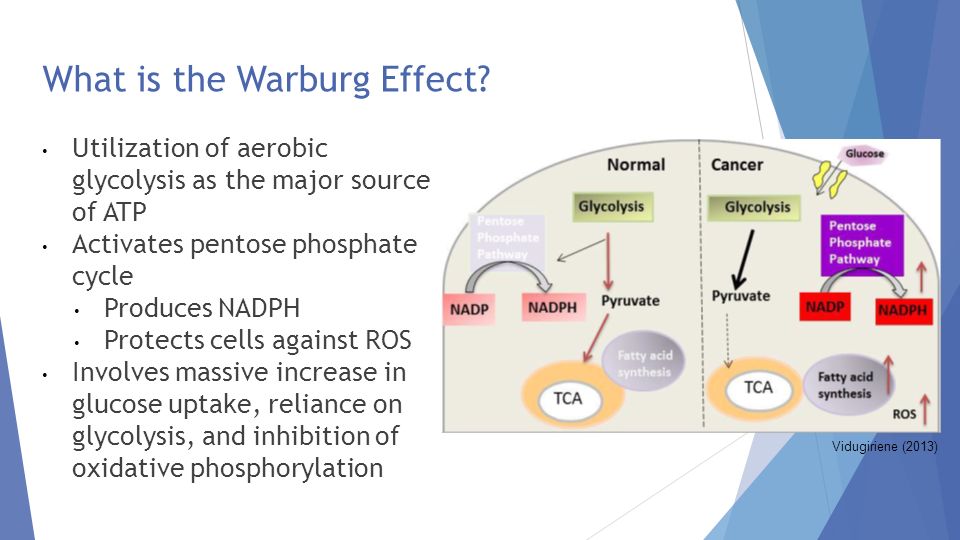
Apilepsin; Convulex; Convulsofin; Depakote; Depakine; Encorate; Valproate; Valparin XR; Valproic Acid; Natrii valproas; Orfiril.
Brief characteristics of the analyte Valproic acid
The main anticonvulsant drug used in developed countries.
Mechanism of action – inhibition of GABA-transferase and increase in the level of GABA (gamma-aminobutyric acid or GABA – gamma-aminobutyric acid). As a result, convulsive readiness and excitability of the motor zones of the brain decrease.Valproic acid also well penetrates the blood-brain barrier and through the placenta, in lactating women it passes into milk. Valproic acid has a beneficial effect on different types of seizures. The drug is well absorbed after oral administration, the maximum concentration is reached after 1 – 4 hours. In the liver, conjugation with glucuronic acid occurs, and in this form the drug is excreted in the urine. The pharmacokinetics of the drug depends on the concentration of the drug in the blood and the dose.
The first tests for the content of the drug in the blood should be carried out 2 – 3 days after the start of treatment.The drug has relatively moderate fluctuations in plasma levels, does not activate liver enzymes, and therefore do not lead to a decrease in the concentrations of other co-administered drugs.
The maximum allowable doses of valproate are, according to the literature, up to 30 – 40 mg / kg and 60 – 80 mg / kg, respectively, per day. When using the drug, it is necessary to monitor the functions of the liver, pancreas and blood clotting. When used in pregnant women, it is necessary to exclude the occurrence of neural tube defects.
What is the purpose of determining the level of valproic acid in the blood
Evaluation of the level of valproic acid in blood serum is used for the purpose of individual selection of the dose and periodic monitoring of therapy (including when adding other drugs, changing the form of the drug and other indications).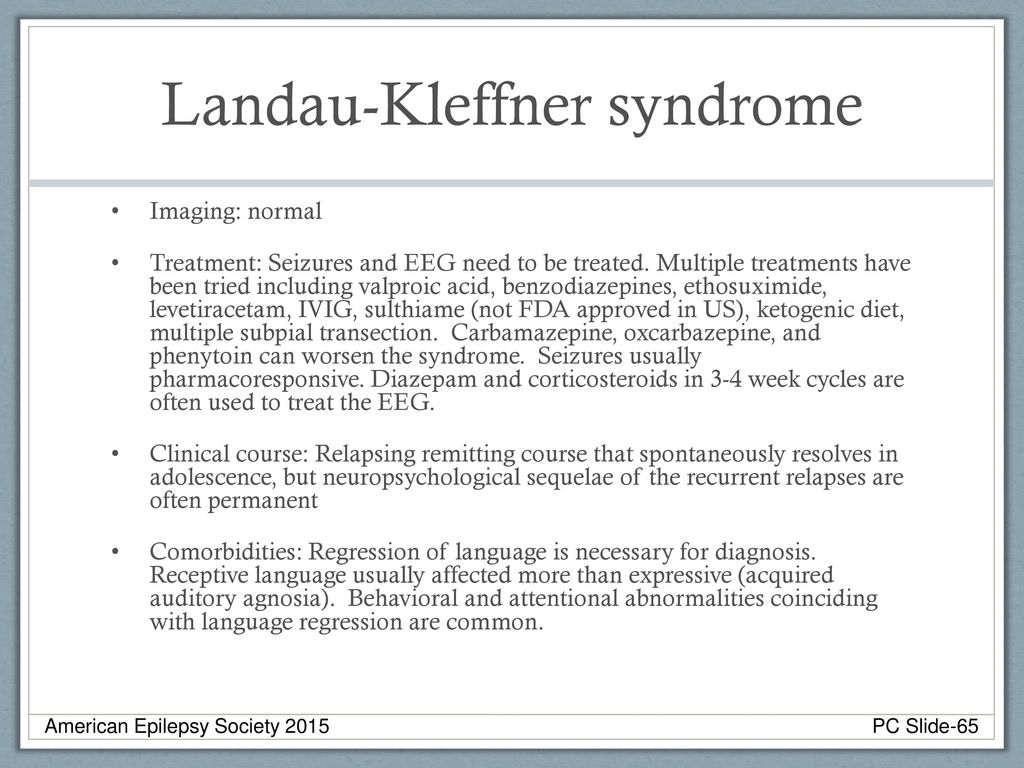
What drugs can affect the result of the Valproic acid test
Enzyme inducers (eg phenobarbital, phenytoin, carbamazepine) increase the metabolism of valproic acid.Mefloquine can lower plasma concentrations of valproic acid.
Limits of determination: 10-400 μg / ml.
Preparations and medicines with active substance Valproic acid
{{/ if}}
{{each list}}
$ {this}
{{if isGorzdrav}}
Delete
{{/ if}}
{{/ each}}
{{/ if}}
Indications for use
Various forms of generalized seizures: small (absences), large (convulsive) and polymorphic.used for focal seizures, childhood tics.
Pharmacological action
antiepileptic, muscle relaxant, sedative By inhibiting GABA transferase, it increases the content of gamma-aminobutyric acid in the central nervous system, which causes a decrease in the threshold of excitability and the level of convulsive readiness of the motor zones of the brain. When taken orally, it dissociates to valproate ion, which is absorbed into the blood plasma.Food decreases the rate of absorption. Cmax in plasma is determined after 1–4 hours. Therapeutic blood concentration is 50–100 μg / ml (it can be significantly higher or lower, depending on the BBB permeability in a given patient). Plasma protein binding is about 90%. It is metabolized in the liver: most of it is glucuronidated, less is oxidized with the participation of either microsomal enzymes or in the mitochondria of hepatocytes (beta-oxidation). T1 / 2 ranges from 6 to 16 hours and depends mainly on the activity of liver microsomal enzymes.Metabolites and conjugates are excreted by the kidneys. A small amount of valproic acid is excreted in milk.
When taken orally, it dissociates to valproate ion, which is absorbed into the blood plasma.Food decreases the rate of absorption. Cmax in plasma is determined after 1–4 hours. Therapeutic blood concentration is 50–100 μg / ml (it can be significantly higher or lower, depending on the BBB permeability in a given patient). Plasma protein binding is about 90%. It is metabolized in the liver: most of it is glucuronidated, less is oxidized with the participation of either microsomal enzymes or in the mitochondria of hepatocytes (beta-oxidation). T1 / 2 ranges from 6 to 16 hours and depends mainly on the activity of liver microsomal enzymes.Metabolites and conjugates are excreted by the kidneys. A small amount of valproic acid is excreted in milk.
Contraindications
Hypersensitivity, incl. “Family” (death of close relatives while taking valproic acid), diseases of the liver and pancreas (in some patients, a significant decrease in liver metabolism is possible), hemorrhagic diathesis.
Application during pregnancy and lactation
FDA category of action on the fetus – D.During treatment, breastfeeding should be discontinued.
Order Valproic acid 300 100 pcs tab p / o (R-Pharm ZAO) in the online pharmacy
Before starting to use Valproic acid and periodically during the first 6 months of treatment, especially in patients at risk of developing liver damage, liver function tests should be performed.
As with the use of most antiepileptic drugs, with the use of valproic acid, a slight increase in the activity of liver enzymes is possible, especially at the beginning of treatment, which proceeds without clinical manifestations and is transient.In these patients, a more detailed study of biological parameters, including the prothrombin index, is necessary, and the dose of the drug may need to be adjusted, and, if necessary, repeated clinical and laboratory examination.
Before starting therapy or before surgery, as well as in the case of spontaneous occurrence of subcutaneous hematomas or bleeding, it is recommended to determine the bleeding time, the number of corpuscles in the peripheral blood, including platelets.
Severe liver damage
Predisposing factors
Clinical experience shows that patients at risk are patients taking several antiepileptic drugs at the same time, children under three years of age with severe seizures, especially against the background of brain damage, mental retardation and / or congenital metabolic or degenerative diseases, patients simultaneously taking salicylates (since salicylates are metabolized by the same metabolic pathway as valproic acid).
After the age of three, the risk of liver damage decreases significantly and decreases progressively as the patient ages. In most cases, such liver damage occurred during the first 6 months of treatment, most often between 2 and 12 weeks of treatment, and usually with the use of valproic acid as part of a combination antiepileptic therapy.
Symptoms suspicious of liver damage
Clinical observation of patients is mandatory for early diagnosis of liver damage.In particular, you should pay attention to the appearance of the following symptoms, which may precede the onset of jaundice, especially in patients at risk (see above):
– nonspecific symptoms, especially sudden onset, such as asthenia, anorexia, lethargy, drowsiness, which sometimes accompanied by repeated vomiting and abdominal pain,
– resumption of seizures in patients with epilepsy.
Patients or members of their families (when using the drug in children) should be warned that they should immediately report the occurrence of any of these symptoms to the attending physician.Patients should immediately undergo clinical examination and laboratory tests of liver function tests.
Detection
Determination of liver function tests should be performed before starting treatment and then periodically during the first 6 months of treatment. Among the usual studies, the most informative studies are those reflecting the state of the protein-synthetic function of the liver, especially the determination of the prothrombin index. Confirmation of a deviation from the norm of the prothrombin index, especially in combination with deviations from the norm of other laboratory parameters (a significant decrease in the content of fibrinogen and blood coagulation factors, an increase in the concentration of bilirubin and an increase in the activity of hepatic transaminases), as well as the appearance of other symptoms indicating liver damage (see.above), requires discontinuation of the drug Valproic acid. As a precaution, if patients have been taking salicylates at the same time, they should also be discontinued.
Pancreatitis
There are rare cases of severe forms of pancreatitis in children and adults that have developed regardless of age and duration of treatment.
There have been several cases of hemorrhagic pancreatitis with rapid progression of the disease from the first symptoms to death.
Children are at increased risk of developing pancreatitis, with increasing age of the child, this risk decreases. Risk factors for developing pancreatitis may include severe seizures, neurologic disorders, or anticonvulsant therapy. Liver failure, combined with pancreatitis, increases the risk of death.
Patients who develop severe abdominal pain, nausea, vomiting and / or anorexia should be evaluated immediately. If the diagnosis of pancreatitis is confirmed, in particular, with increased activity of pancreatic enzymes in the blood, the use of valproic acid should be discontinued and appropriate treatment should be initiated.
Suicidal thoughts and attempts
Suicidal thoughts and attempts have been reported in patients taking antiepileptic drugs for some indications. A meta-analysis of randomized placebo-controlled trials of antiepileptic drugs also showed an increase in the risk of suicidal thoughts and attempts by 0.19% in all patients taking antiepileptic drugs (including a 0.24% increase in this risk in patients taking antiepileptic drugs for epilepsy). compared with their frequency in patients taking placebo.The mechanism of this effect is unknown. Therefore, patients taking Valproic acid should be constantly monitored for suicidal thoughts and attempts, and, if they occur, appropriate treatment should be carried out. Patients and their caregivers are advised to seek immediate medical attention if the patient has suicidal thoughts or attempts to seek immediate medical attention.
Carbapenems
The simultaneous use of carbapenems is not recommended (see.(See section Interaction with other medicinal products).
Patients with known or suspected mitochondrial disease
Valproic acid can initiate or exacerbate a patient’s mitochondrial disease caused by mutations in mitochondrial DNA. as well as a nuclear gene encoding a mitochondrial polymerase enzyme (POLG). In particular, in patients with congenital neurometabolic syndromes caused by mutations in the gene encoding β-polymerase (POLG), for example, in patients with Alpers-Huttenlocher syndrome using valproic acid, a higher incidence of acute liver failure and liver-related deaths was associated.Diseases due to β-polymerase defects may be suspected in patients with a family history of such diseases or symptoms suspicious of their presence, including unexplained encephalopathy, refractory epilepsy (focal, myoclonic), status epilepticus, delayed mental and physical development, axomotor sensorimotor neuropathy, myopathy, cerebellar ataxia, ophthalmoplegia or complicated migraine with visual (occipital) aura, and others.In accordance with current clinical practice, for the diagnosis of such diseases, testing for mutations in the polymerase gene (POLG) should be carried out (see section Contraindications).
Women with childbearing potential , pregnant women
Valproic acid should not be used in female children and adolescents, women of childbearing potential and pregnant women, unless alternative treatments are ineffective or are not transferred.This limitation is associated with a high risk of teratogenic effects and disorders of mental and physical development in children who have been exposed to valproic acid in utero. The benefit / risk ratio should be carefully reevaluated in the following cases: during a regular review of treatment, when a girl reaches puberty and, urgently, in case of planning or pregnancy in a woman taking valproic acid.
During treatment with valproic acid, women of childbearing potential should use reliable methods of contraception, and they should be informed about the risks associated with taking valproic acid during pregnancy (see.(See section Use during pregnancy and breastfeeding). To help the patient understand these risks, the doctor prescribing valproic acid should provide the patient with comprehensive information about the risks associated with taking valproic acid during pregnancy.
In particular, the doctor prescribing valproic acid should be sure. that the patient understands:
– the nature and magnitude of the risks when using valproic acid during pregnancy, in particular, the risks of teratogenic effects, as well as the risks of disorders in the mental and physical development of the child,
– the need to use effective contraception,
– the need for regular revision treatment,
– the need for urgent consultation with her attending physician if she suspects that she has become pregnant, or when she suspects the possibility of pregnancy.
A woman planning to become pregnant should, if possible, try to switch to alternative treatment before attempting to conceive (see section Use during pregnancy and breastfeeding).
Treatment with valproic acid should only be continued after a physician experienced in the treatment of epilepsy and bipolar disorder has reassessed the benefit / risk ratio of treatment.
Renal failure
It may be necessary to reduce the dose of valproic acid due to an increase in the concentration of its free fraction in the blood serum.If it is impossible to monitor plasma concentrations of valproic acid, the dose of the drug should be adjusted based on clinical observation of the patient.
Enzyme deficiency of the urea cycle (urea cycle)
If you suspect an enzyme deficiency of the urea cycle, the use of valproic acid is contraindicated. Several cases of hyperammonemia with stupor or coma have been described in these patients.In these cases, metabolic studies should be performed before starting treatment with valproic acid (see section Contraindications).
In children with unexplained gastrointestinal symptoms (anorexia, vomiting, cases of cytolysis), a history of lethargy or coma, mental retardation, or a family history of neonatal or child death, metabolic studies, in particular , determination of ammonia (the presence of ammonia and its compounds in the blood) on an empty stomach and after a meal (see.(See section Contraindications).
Patients with systemic lupus erythematosus
Although it has been shown that during treatment with Valproic acid, dysfunctions of the immune system are extremely rare, the potential benefits of its use must be compared with the potential risk when using the drug in patients with systemic lupus erythematosus …
Weight gain
Patients should be warned about the risk of weight gain at the beginning of treatment, and measures, mainly dietary ones, should be taken to minimize this phenomenon.
Patients with diabetes mellitus
Given the possibility of adverse effects of valproic acid on the pancreas, when using the drug in patients with diabetes mellitus, blood glucose concentration should be carefully monitored. When examining urine for the presence of ketone bodies in patients with diabetes mellitus, it is possible to obtain false positive results, since valproic acid is excreted by the kidneys, partly in the form of ketone bodies.
Patients , Infected with Human Immunodeficiency Virus (HIV)
Valproic acid has been shown in vitro to stimulate HIV replication under certain experimental conditions. The clinical significance of this fact, if any, is unknown. In addition, the significance of these in vitro data for patients receiving maximal suppressive antiretroviral therapy has not been established.However, these data should be considered when interpreting the results of continuous monitoring of viral load in HIV-infected patients taking valproic acid.
Patients with existing type II carnitine palmitoyltransferase (CBT) deficiency
Patients with existing type II CIT deficiency should be warned of the higher risk of rhabdomyolysis when taking valproic acid.
Ethanol
Ethanol is not recommended during treatment with valproic acid.
Other special instructions
Inert matrix of the drug Valproic acid (prolonged release drug) due to the nature of its excipients is not absorbed in the gastrointestinal tract, after the release of active substances, the inert matrix is excreted with feces.
Valproate preparations for agitation in dementia – Baillon, SF – 2018
Valproate preparations for the treatment of agitated behavior in people with dementia
Relevance
Agitated behavior is very common in advanced dementia.It can include verbal behavior such as yelling and physical behavior such as wandering or physical aggression. It has been shown to exacerbate the stress of caregivers, increase the risk of injury, and increase the need for people with dementia to be hospitalized.
The type of medication used to treat agitated behavior in people with dementia is valproate, which is available in several different formulations (valproic acid, sodium divalproexate, sodium valproate, and hemi-sodium valproate).These medications are not recommended in these guidelines (for example, from the National Institute of Health and Medical Excellence), but are sometimes still prescribed for people with dementia to treat agitated behavior.
Purpose of this review
We wanted to review the evidence of how effective and safe it is to prescribe valproate to people with dementia to treat agitation.
Studies included in this review
We searched medical databases up to December 2017 for studies that compared any valproate to a placebo (dummy) for the treatment of agitated behavior in people diagnosed with dementia.
We included five studies with 479 participants who had different types of dementia and agitated behavior. Most of the studies lasted six weeks, although one only lasted three weeks. The studies were generally well conducted, but the methods were not always fully described, and in one study there was a high risk of bias due to the large number of people dropping out of the valproate group.
Main Findings
The studies measured arousal behavior using a variety of scales, and the reliability of the evidence for the different scales ranged from moderate to very low.Overall, we found no evidence that valproate medications improved behavior or, in particular, agitated behavior. We found that valproate medications likely had little to no effect on participants’ ability to perform daily activities. We couldn’t be sure if they influenced cognition (thinking and remembering) because the reliability of the evidence was very low.
In three studies, we found low reliability evidence that participants taking valproate were more likely to be injured than participants taking placebo.We couldn’t be as certain about the differences in terms of serious harm, such as events such as serious illness or hospitalization, but data from two studies showed that they may be more frequent in participants taking valproate. Some of the side effects associated with valproate were drowsiness, nausea, vomiting, watery stools, and urinary tract infections.
Conclusions
We found only five comparatively small studies to be included in this review.They differed in their methods, the type of drugs and their doses, the duration of treatment, and the scales used to make the measurements. This limited the ability to combine data from all studies. However, we can be reasonably confident in the conclusion that valproate medications do not improve agitated behavior in dementia. They can also be associated with harmful effects.
instructions for use, analogs, composition, indications
Special Warnings
Pregnancy Prevention Program
The Pregnancy Prevention Program is coordinated by the National Authority.
Valproate has a high teratogenic potential, and children exposed to valproate in utero are at high risk of developing congenital malformations and impaired mental and physical development (see Pregnancy and Lactation).
Depakine Chronosphere is contraindicated in the following situations:
• In pregnancy, to treat epilepsy, unless there is no suitable alternative treatment (see Special Warnings and Precautions for Use, Pregnancy and Lactation).
• During pregnancy, for the treatment of bipolar disorder (see Special Warnings and Precautions for Use, Pregnancy and Lactation).
• In women of childbearing age, if the conditions of the Pregnancy Prevention Program are not followed (see Special Warnings and Precautions for Use, Pregnancy and Lactation).
Pregnancy Prevention Program Terms:
The prescribing physician must ensure that:
– Individual circumstances are assessed in each case and discussed with the patient.This should ensure patient participation and understanding of the therapeutic options, together with the risks and measures necessary to mitigate the risks.
– The possibility of pregnancy is assessed in all female patients.
– The patient understands and understands the risks of congenital malformations and developmental disorders of the nervous system, including the severity of these risks for children exposed to intrauterine exposure to valproate.
– The patient understands the need for pregnancy testing prior to treatment and during treatment as needed.
– The patient was consulted about contraceptive methods, and she agrees to use effective methods of contraception without interruption during the entire period of treatment with valproate (see the Contraception subsection of this section).
– The patient understands the need for regular (at least once a year) evaluation of treatment by a physician experienced in the treatment of epilepsy.
– The patient understands the need to consult with her doctor, before planning a pregnancy, to ensure timely discussion and transition to alternative treatment options before conception, and before stopping contraception.
– The patient understands the need for urgent consultation with her doctor in case of pregnancy.
– The patient received the Patient Brochure.
The patient acknowledges that she understands the dangers and the necessary precautions associated with the use of valproate (Annual Risk Disclosure Form).
These conditions also apply to women who are currently sexually inactive, unless the doctor considers that there are compelling reasons for not being at risk of pregnancy.
A pharmacist or other healthcare professional should provide the following:
– A patient card is provided on every occasion when prescribing or dispensing prescription valproate, and patients understand its content.
– Patients are advised not to stop treatment with valproate and seek immediate medical attention in case of planned or suspected pregnancy.
Girls:
– Prescribers should ensure that girls’ parents / guardians understand the need to see a doctor as soon as a girl taking valproate has her first period.
– The doctor must ensure that the parents / legal representatives of the girl who had the first menstruation receive comprehensive information about the risks of congenital malformations and neuropsychiatric disorders, including the severity of these risks for children exposed to intrauterine exposure to valproate.
– In patients who have their first menstrual period, the physician should annually assess the need for taking valproate and consider alternative therapies.If valproate is the only suitable treatment, the need for effective contraception should be discussed, as well as all other conditions of the pregnancy prevention program. Efforts should be made by the clinician to transfer girls to alternative therapy before they reach adulthood.
Pregnancy test
Pregnancy should be ruled out before starting treatment with valproate. To prevent unintentional use during pregnancy, treatment with valproate should not be started in women of childbearing age, without obtaining a negative pregnancy test result (pregnancy test based on blood plasma analysis), confirmed by a doctor.
Contraception
Women of childbearing age who have been prescribed valproate should use effective contraception without interruption for the entire duration of valproate treatment. These patients should be provided with comprehensive information on preventing pregnancy and referred to contraceptive counseling if they are not using effective contraceptive methods. At least one effective method of contraception should be used (preferably a user-independent form such as an intrauterine device or implant) or two complementary methods of contraception, including a barrier method.In each case, the individual circumstances should be assessed when discussing the choice of contraceptive method with the participation of the patient, to ensure her involvement and adherence to the chosen measures. Even if she has amenorrhea, she should follow all the tips for effective contraception.
Annual physician treatment evaluation
The physician should check at least once a year whether valproate is the most appropriate treatment for the patient. The clinician should discuss the annually completed Risk Disclosure Form, both at the beginning of treatment and during each annual treatment evaluation, and ensure that the patient understands its content.
Planning a pregnancy
If a woman is planning a pregnancy, a physician experienced in epilepsy treatment should review treatment with valproate and suggest alternative treatment options. Every effort should be made to switch to appropriate alternative treatment before conception and before stopping contraception (see Pregnancy and Lactation). If a change in therapy is not possible, the woman should receive additional counseling regarding the risks to her unborn child associated with taking valproate to help her make an informed decision about family planning.
In case of pregnancy
If a woman using valproate becomes pregnant, she should immediately consult a doctor in order to review the treatment regimen with valproate and consider alternative treatments.All patients who become pregnant during therapy with valproate should be referred to a geneticist for connection with pregnancy (see Pregnancy and lactation).
Educational materials
To help healthcare providers and patients avoid exposure to valproate during pregnancy, the Marketing Authorization Holder has provided educational materials to remind and provide guidance on the use of valproate in women of childbearing age and details of the Pregnancy Prevention Program.The Patient Brochure and Patient Record should be provided to all women of childbearing age who use valproate.
The Risk Disclosure Form should be used at the time of initiation of treatment and during each annual review of valproate treatment by a physician, as well as when planning a pregnancy or if a woman is pregnant.
Increased seizures
As with other antiepileptic drugs, when using valproate in some patients, instead of relieving symptoms, the frequency and severity of seizures may increase (up to status epilepticus) or new types of seizures may appear.In case of increased seizures, the patient is advised to immediately consult a doctor (see Side Effects). These seizures should be distinguished from those that can occur due to changes in concurrent antiepileptic treatment or due to pharmacokinetic interactions (see Interaction with other medicinal products), due to toxicity (liver disease or encephalopathy) (see Special warnings and precautions for use, Side effects) or in connection with an overdose.
Due to the fact that the drug is converted to valproic acid in the body, it should not be combined with other drugs that undergo the same transformation in order to avoid an overdose of valproic acid (for example, valproate seminatrium, valpromide).
Liver dysfunction
Conditions of occurrence:
There have been very rare reports of severe and sometimes fatal liver damage.
The risk is highest among infants and children under 3 years of age with severe epilepsy and, in particular, epilepsy associated with brain damage, mental retardation and / or a genetic metabolic disorder or degenerative disease.At the age of over 3 years, the incidence of the disease is much lower and gradually decreases with age.
In the vast majority of cases, such liver damage occurs in the first 6 months of treatment, usually between 2 and 12 weeks, and, as a rule, during complex antiepileptic therapy.
Possible Symptoms:
Early diagnosis is based primarily on clinical examination. In particular, two types of symptoms that may precede jaundice must be taken into account, especially in patients at risk (see.Conditions of occurrence):
– First, nonspecific symptoms that usually appear suddenly, such as asthenia, anorexia, extreme fatigue, drowsiness, sometimes accompanied by repeated vomiting and abdominal pain;
– Secondly, relapses of epileptic seizures, despite proper treatment. The patient, and if this is a child, then his family members, need to be aware that if any of these symptoms appear, they should immediately consult a doctor. In this case, in addition to clinical examination, an urgent study of liver function is necessary.
Discovery:
Before starting treatment and during the first 6 months, it is necessary to periodically check the liver function. Among the classic tests, the most important are tests that reflect the protein-synthetic function of the liver and especially the prothrombin index. If an abnormally low level of prothrombin is detected, especially accompanied by other altered laboratory data (a significant decrease in the level of fibrinogen and blood clotting factor, an increase in the level of bilirubin and transaminases), treatment with Depakine Chronosphere should be suspended.As a precautionary measure, interrupt treatment with salicylate derivatives if they have been included in the treatment regimen because they use the same metabolic pathways.
Pancreatitis:
In extremely rare cases, severe forms of pancreatitis were noted, which in some cases led to death. These cases were observed regardless of the patient’s age and the duration of treatment, although young children appear to be at particular risk.
Pancreatitis with an unfavorable outcome was usually observed in young children, or in patients with severe epilepsy, brain damage, or with the use of complex anticonvulsant therapy.
Lack of liver function in pancreatitis increases the risk of death.
In the event of acute abdominal pain or gastrointestinal symptoms such as nausea, vomiting and / or anorexia, it is advisable to assume a diagnosis of pancreatitis, and in patients with elevated levels of pancreatic enzymes, treatment should be discontinued and the necessary alternative therapeutic measures taken.
Estrogen preparations
Valproate does not reduce the effectiveness of hormonal contraceptives.
However, estrogen-containing drugs, including estrogen-containing hormonal contraceptives, can increase the clearance of valproate, which can lead to a decrease in serum valproate concentration and a potential decrease in the effectiveness of valproate. Physicians should monitor the clinical response (seizure control or mood control) when starting or stopping estrogen-containing medications. Consider monitoring serum valproate levels (see Drug Interactions).
Suicidal thinking and behavior
Cases of development of suicidal thinking and behavior have been reported in patients taking antiepileptic drugs for some indications. A meta-analysis of randomized, placebo-controlled trials of antiepileptic drugs also showed an increased risk of suicidal ideation and behavior. The reasons for this risk are unknown, and the available data do not allow to exclude an association of an increased risk with taking sodium valproate.
Thus, patients should be closely monitored for signs of suicidal thinking and behavior and appropriate treatment should be prescribed. Patients (and their caregivers and medical staff) should be advised to see a doctor as soon as signs of developing suicidal ideation and behavior appear.
Interaction with other medicinal products
Concomitant use of this drug with lamotrigine is not recommended.Interaction with other medicinal products).
Concomitant use of this drug with carbapenems is not recommended (see Interaction with other medicinal products).
This medicinal product contains 9.5 mg (100 mg) / 23.5 mg (250 mg) / 47 mg (500 mg) sodium in 1 sachet. This should be taken into account in patients on a low sodium diet.
Patients with or suspected of having mitochondrial abnormalities
Valproate can cause or worsen the clinical symptoms of major mitochondrial pathologies caused by mutations in mitochondrial DNA, as well as the nuclear coding gene POLG.In particular, acute liver failure and liver-related deaths have been associated with valproate treatment to a greater extent in patients with hereditary neurometabolic syndromes caused by mutations in the mitochondrial γ-polymerase (POLG) gene, such as Alpers-Guttenlocher syndrome. POLG-related disorders should be suspected in patients with a family history or suggestive symptoms typical of POLG disorders, including, but not limited to, encephalopathy of unexplained etiology, refractory epilepsy (focal, myoclonic), presence of status epilepticus, developmental delay, psychomotor axonal motor-sensory neuropathy, myopathic cerebellar ataxia, ophthalmoplegia, or complicated occipital migraines.Testing for the presence of POLG mutations should be performed in accordance with current clinical practice to diagnose such pathologies.
Cognitive or extrapyramidal disorders
Cognitive or extrapyramidal impairments may be associated with visualized atrophy of the cerebral cortex. In this regard, this variant of the clinical picture can be confused with dementia or Parkinson’s disease. These disorders are reversible after discontinuation of treatment (see.(See the Side Effects section).
Precautions
Liver function monitoring
It is necessary to determine liver function before starting treatment (see Contraindications) and periodically during the first 6 months of treatment, especially in patients at risk (see Special warnings and precautions for use).
It should be emphasized that during treatment with Depakine, like other antiepileptic drugs, there may be a small, isolated and temporary increase in the level of transaminases, especially at the beginning of treatment, in the absence of any clinical symptoms.
In this case, it is recommended to conduct a more complete laboratory examination (including, in particular, the determination of the prothrombin index) in order to revise the dosage, if required, and repeat the tests depending on the change in parameters.
Children
For children under 3 years of age, valproate alone is recommended, but before starting treatment, the potential benefits of drug treatment should be weighed against the risk of liver disease or pancreatitis.Special warnings and precautions for use).
Avoid combined use with salicylate derivatives in children because of the risk of hepatotoxicity (see Special Warnings and Precautions for Use) and the risk of bleeding.
Hematological tests
Before starting therapy or surgery, then after 15 days and at the end of treatment, in the case of hematomas or spontaneous bleeding, it is recommended to conduct a hematological blood test (determine the blood count, including platelet count, bleeding time and coagulation tests) (see.Side effects).
Renal failure
In renal failure, it may be necessary to reduce the dose of the drug. Since monitoring plasma valproate concentration can be confusing, dosage should be adjusted in accordance with clinical monitoring
Patients with type II carnitine palmitoyltransferase II deficiency
Patients with type II carnitine palmitoyltransferase (CPT-P) deficiency should be informed about the high risk of developing rhabdomyolysis while taking valproate.
In acute abdominal pain syndrome and gastrointestinal symptoms such as nausea, vomiting and / or anorexia, it is necessary to be able to diagnose pancreatitis and, with an increased level of pancreatic enzymes, to cancel the drug, taking alternative therapeutic measures.
Violations of the urea cycle
Sodium valproate is contraindicated in patients with a deficiency of urea cycle enzymes. Several cases of hyperammonemia accompanied by stupor and / or coma have been described in these patients.
In children with a history of hepatic and gastrointestinal symptoms of unexplained etiology (anorexia, vomiting, acute cases of cytolysis), lethargy or coma in history, with mental retardation or with a family history of death of a newborn or child, before starting treatment with sodium valproate should be studies of metabolism, especially fasting and postprandial ammoniaemia, have been carried out.
Patients with systemic lupus erythematosus
Although it has been shown that during treatment with this drug, dysfunctions of the immune system are extremely rare, the potential benefit from its use must be compared with the potential risk when prescribing the drug to patients suffering from systemic lupus erythematosus.
Increase in weight
At the beginning of treatment, the patient should be warned about the risk of weight gain, and measures, mainly dietary ones, should be taken to minimize this phenomenon.
Alcohol
It is not recommended to take alcohol during treatment with valproate.
Patients with diabetes mellitus: The drug is excreted mainly through the kidneys, partly in the form of ketone bodies, which can give a false positive result in urine analysis for ketone bodies.
Normotimists – The Pinel Case
Mood stabilizers are a class of psychotropic drugs commonly used to treat bipolar disorder (BAD) . In addition, indications of normotimics are usually used to reduce aggression and irritability, enhance the effect of antidepressants in case of their insufficient effect. This explains the use of normotimics in patients without a diagnosis of bipolar disorder: in patients with depression, personality disorders, schizoaffective disorder, or organic brain damage.Normotimics do not always mean bipolar disorder, and bipolar disorder, in turn, is not always treated with normotimics. Sometimes antipsychotics are used in combination with antidepressants to treat this mental illness. Below we describe four normotimics: lithium salts, carbamazepine, valproic acid, and lamotrigine.
Lithium Carbonate
In Russia, lithium carbonate is the only representative of lithium salts. Lithium citrate is still used in the United States, but it is not used in Russia.Lithium carbonate is used in bipolar and schizoaffective disorder for the relief of manic episodes and as a supportive therapy. It can also be helpful in reducing irritability in patients with mental health problems. The addition of lithium carbonate to antidepressant therapy can enhance its effect, although other methods are currently being used by physicians to overcome the lack of effect of antidepressant drugs. Another strong point of lithium salts is that, according to some reports, they can reduce the risk of suicide in patients with depression.
To assess the effectiveness and safety of therapy with lithium salts abroad, it is customary to evaluate the concentration of lithium ions in the blood. Such an analysis is also available in our country, but it is performed by private laboratories and at the expense of the patient or his relatives.
As side effects of lithium preparations are usually mentioned:
- hand tremor;
- lethargy, memory loss;
- skin rash, acne, or hair loss;
- impaired renal function.
The drug is widely used in the practice of psychiatrists due to its strong and relatively rapidly developing action.
Unlike lithium salts, the rest of the normotimics are anticonvulsants – drugs used to treat epilepsy. Examples include valproic acid, carbamazepine, and lamotrigine.
Valproic acid
Valproic acid is usually taken in the form of sodium salts – sodium valproate.This compound itself is unique in psychiatry in that it does not contain a cyclic portion of carbon and other atoms. Valproic acid is widely used in various types of epilepsy, but it also found a place in psychiatry. The main indication is BAR. Valproic acid and its salts are used to treat the manic phase of bipolar disorder and to provide supportive care for this condition. A number of researchers believe that valproic acid may be especially effective in rapid phase changes and in mixed conditions within BAR.
A separate area of use for valproic acid is the suppression and prevention of aggression, emotional instability, impulsivity and self-harm, which may be useful in borderline personality disorder. Valproic acid is also used to enhance the action of antipsychotics.
The main side effects of valproic acid that usually lead to drug withdrawal are
- increase in body weight;
- problems with digestion (nausea, vomiting, diarrhea and cramps) – these adverse events are usually dose-dependent: the higher the dose of the drug taken, the greater the severity of side effects;
- drowsiness and lethargy;
- liver damage.
Recently, doctors have been actively discussing the harm of valproic acid to the fetus if the mother takes valproic acid during pregnancy. I must say that other normotimics do not have any advantage in this respect over valproic acid.
Carbamazepine
Carbamazepine is widely loved by neurologists, psychiatrists and narcologists. Various neuralgias, bipolar disorder, mood disorders due to damage to the central nervous system, alcohol dependence and withdrawal syndrome, and so on and so forth.Carbamazepine is dear to the hearts of many specialists and is prescribed for a wide variety of conditions. It should be borne in mind that carbamazepine reduces the concentration of antipsychotics (neuroleptics) and antidepressants in the patient’s blood, which can lead to a deterioration in the condition when carbamazepine is added. Like other normotimics, carbamazepine is prescribed for aggression and impulsivity, if they occur in a mental disorder.
Side effects of carbamazepine:
- weakness, lethargy;
- nausea;
- dizziness;
- skin rash;
- a decrease in the number of leukocytes in the blood (especially at the beginning of therapy).


